2. MBB7754 H. retusa ‘turgida’. Brakkekuil. What is most significant about this population is its whereabouts that highlights the overwhelming importance of distribution and geography. The drainage systems (or parts of them) of the Southern Cape drain southwards from the mountains to the sea e.g. Gouritz, Goukou, Duiwenhoks and Lower Breede. These are important especially when it comes to the habitats in the way of exposed rock and steep faces that favour plants requiring skeletal soils. Brakkekuil is on the Slang River that drains southwestwards from near Heidelberg to flow into the Breede River near Malgas. H. retusa ‘turgida’ has not been reported for this entire river system before, while it is present on the Breede River and even westwards at Bredasdorp. So the Brakkekuil population is significant and also significantly different. The plants are neither strictly solitary nor greatly clump-forming and it is not really surprising as this mirrors what happens with H. cooperi in the Eastern Cape in situations that are neither fully cliff face nor plain. The Brakkekuil plants are on the surface of a rocky shale knoll with plants enduring direct exposure to northwestern sun as well as obtaining refuge in the more vegetated and protected slightly southern aspect. It is quite difficult to make reference of individual plants to Latin names, in that variation is already ensconced in the existing system viz. ‘longibracteata’. I gladly concede that all the old names, as Rowley has suggested, can be paraded out again and made use of. In fact I have also said that this is how the contribution of Breuer and Hayashi can be fruitfully used. For my reality this population is H. retusa ‘turgida’ Slangrivier. It is quite the most variable population of the ‘turgida’ side of H. retusa that I have ever seen and there are plants that resemble the more sandstone associated variants (‘caespitosa’) at, say, Tradouw Pass as well as individuals that compare with some of the other populations I will cover from the ferricrete inselbergs. Another very significant observation is the similarity of some plants to those that can be found in H. mirabilis ‘paradoxa’ that is not very far away to the southeast at Vermaaklikheid. There is no doubt that if a full and real understanding of natural systems is to be found it will lie in the realization that even my suggestion favouring a “super species concept” may be conservative. It is actually curious how my treatment of that has been met by readers who have been kind and considerate enough to communicate with me on the issue. The ‘super species” proposal actually comes from Prof. Canio Vosa. It is and was not, any attempt to confound anyone or obfuscate the issue. Prof. Vosa is directly addressing the issue that we have a classification that is a sorry marriage of scientist and layman user groups – both ignorant of the full extent of the field situation.
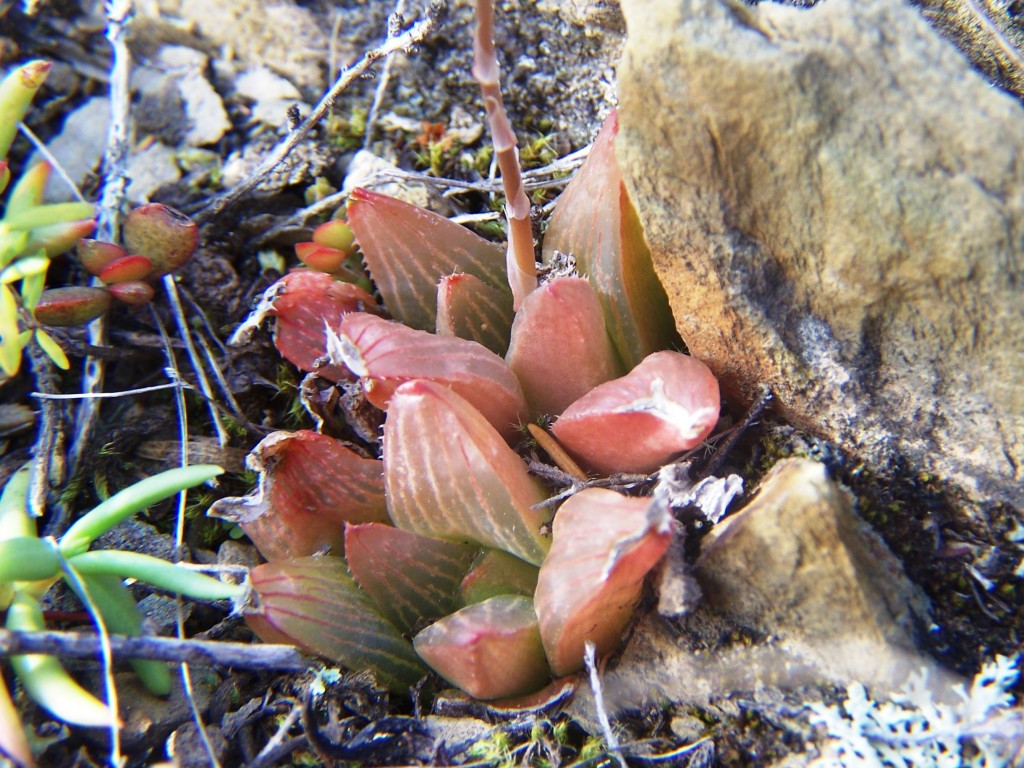
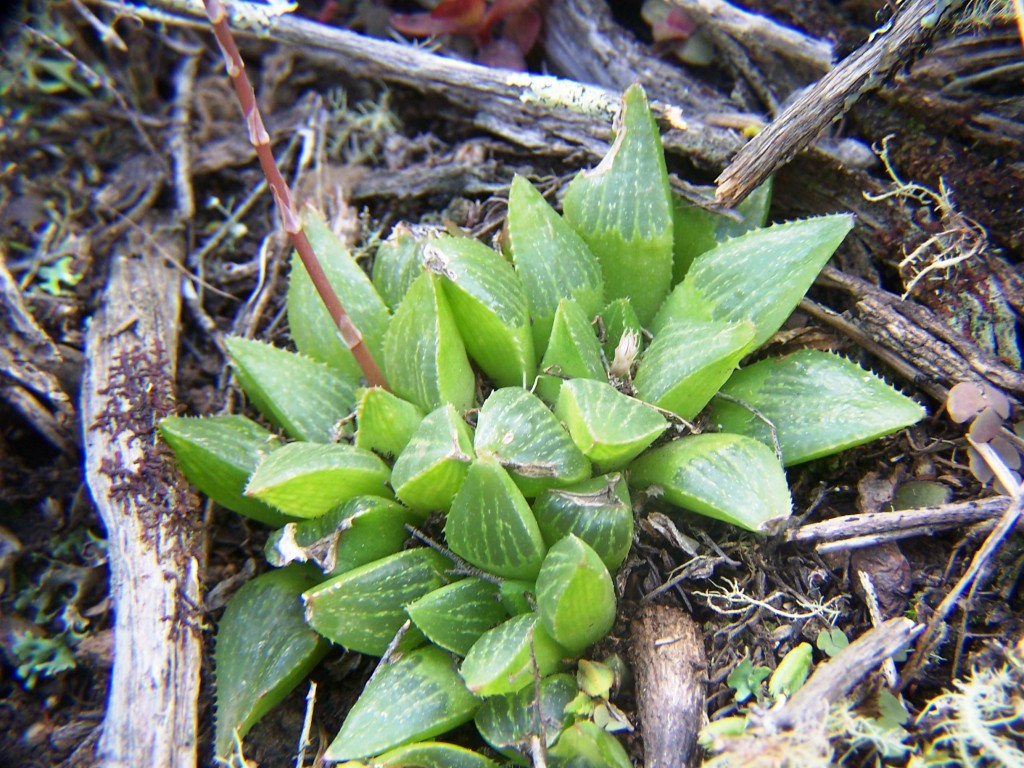
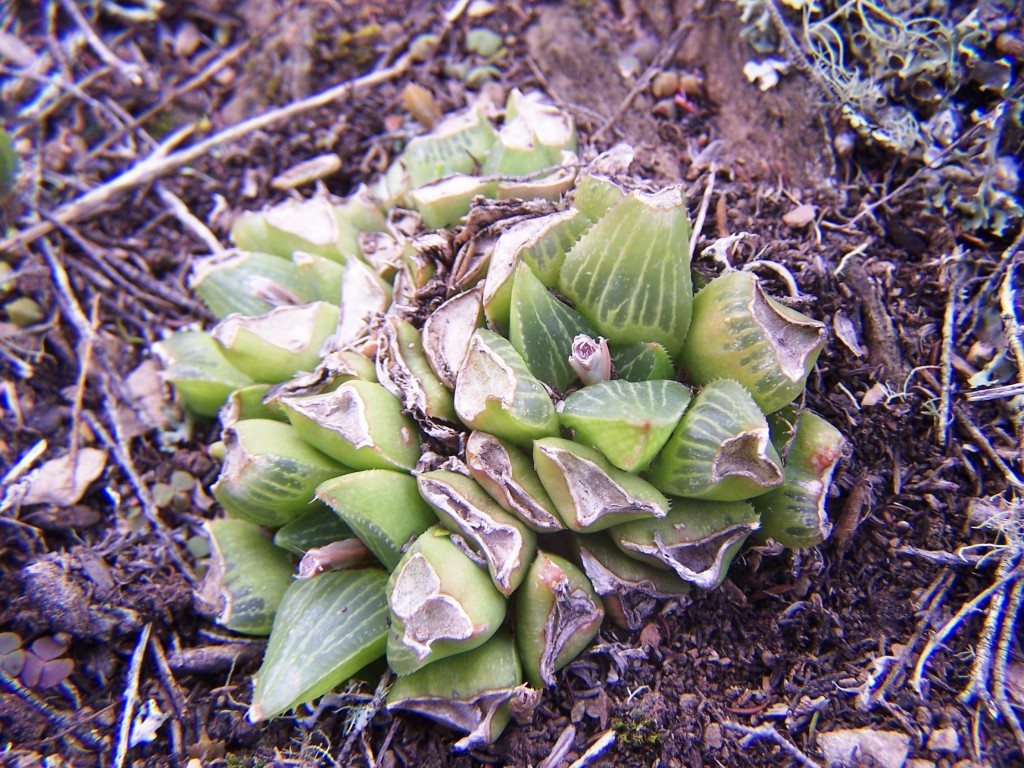
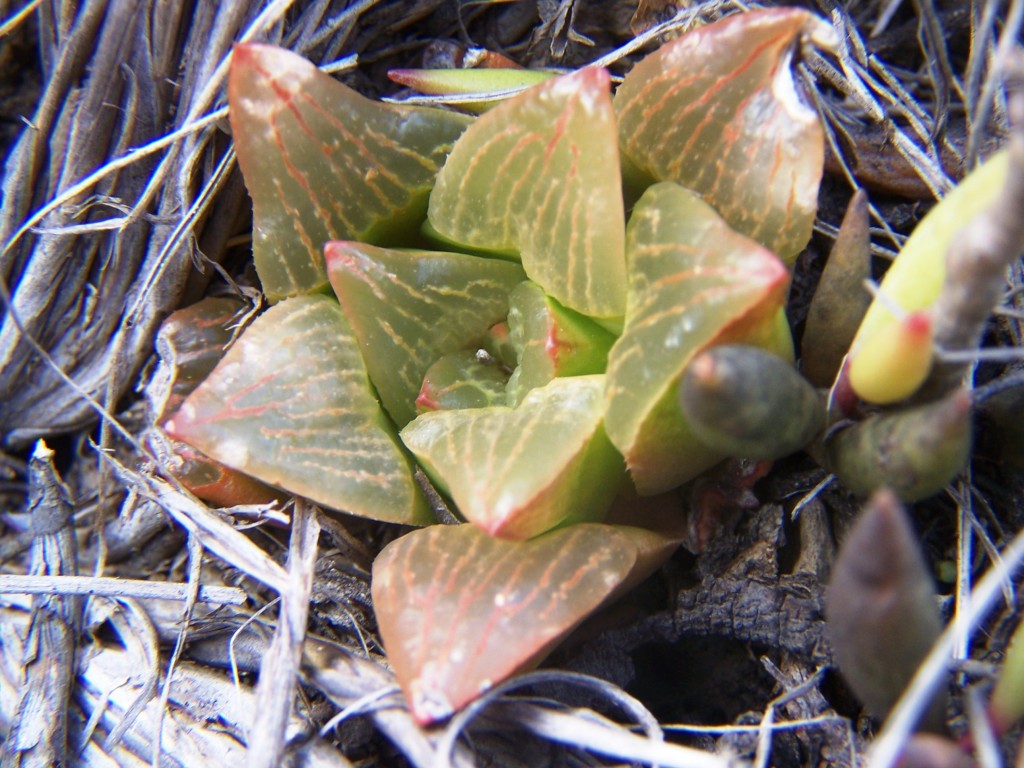
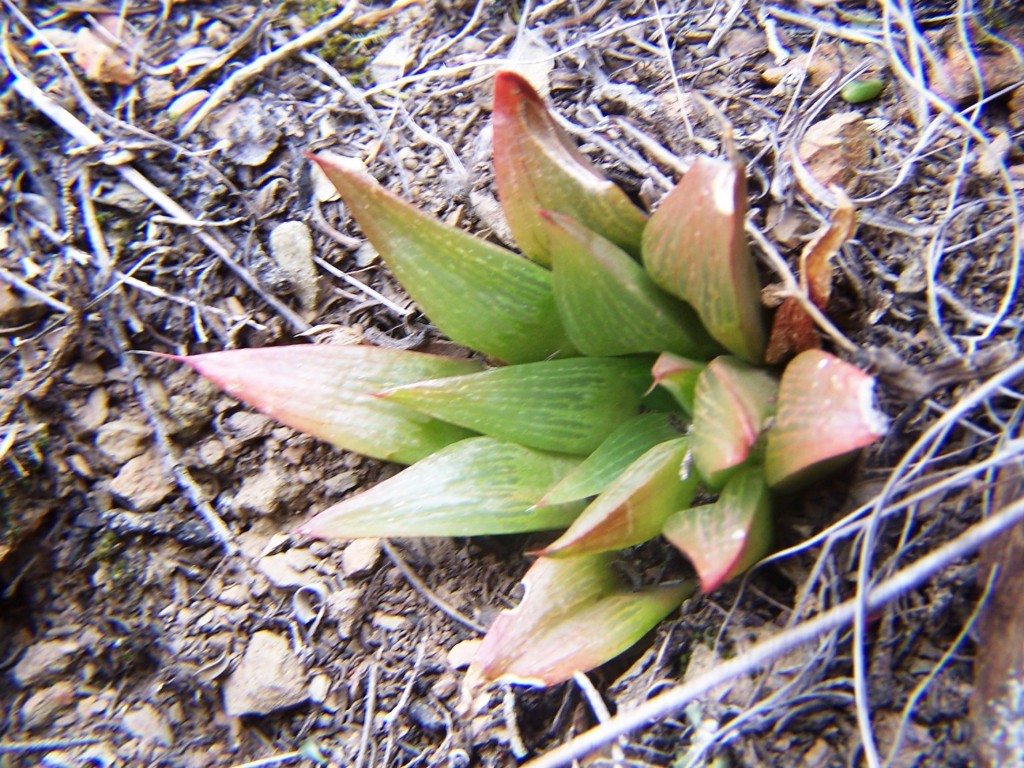
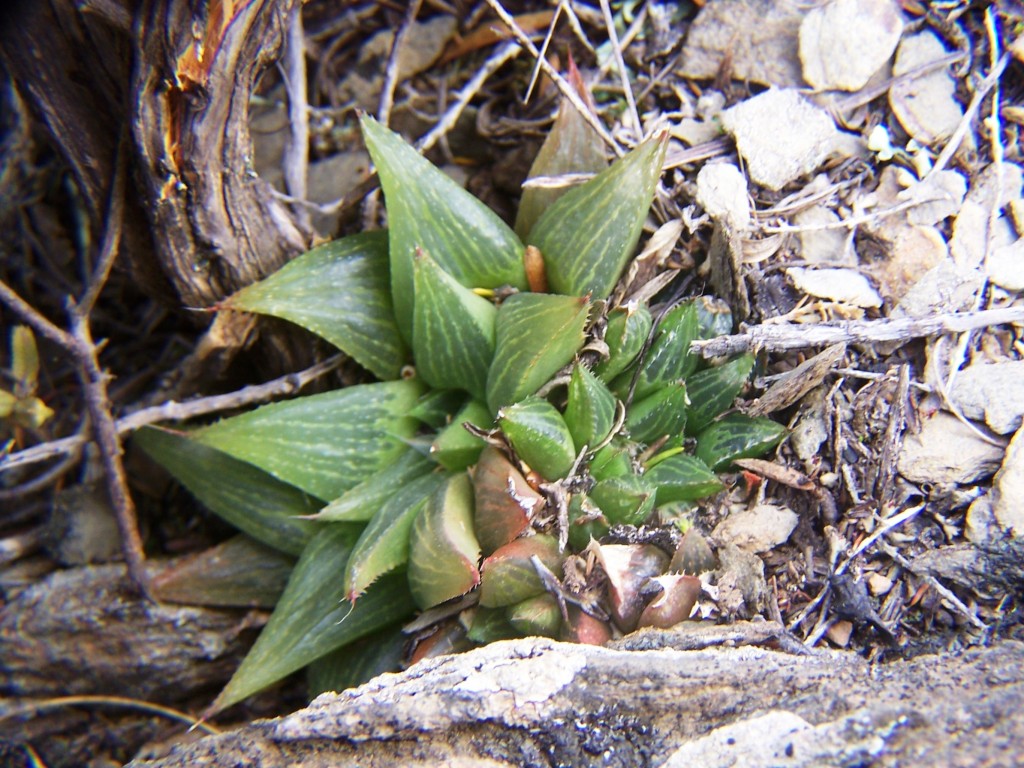
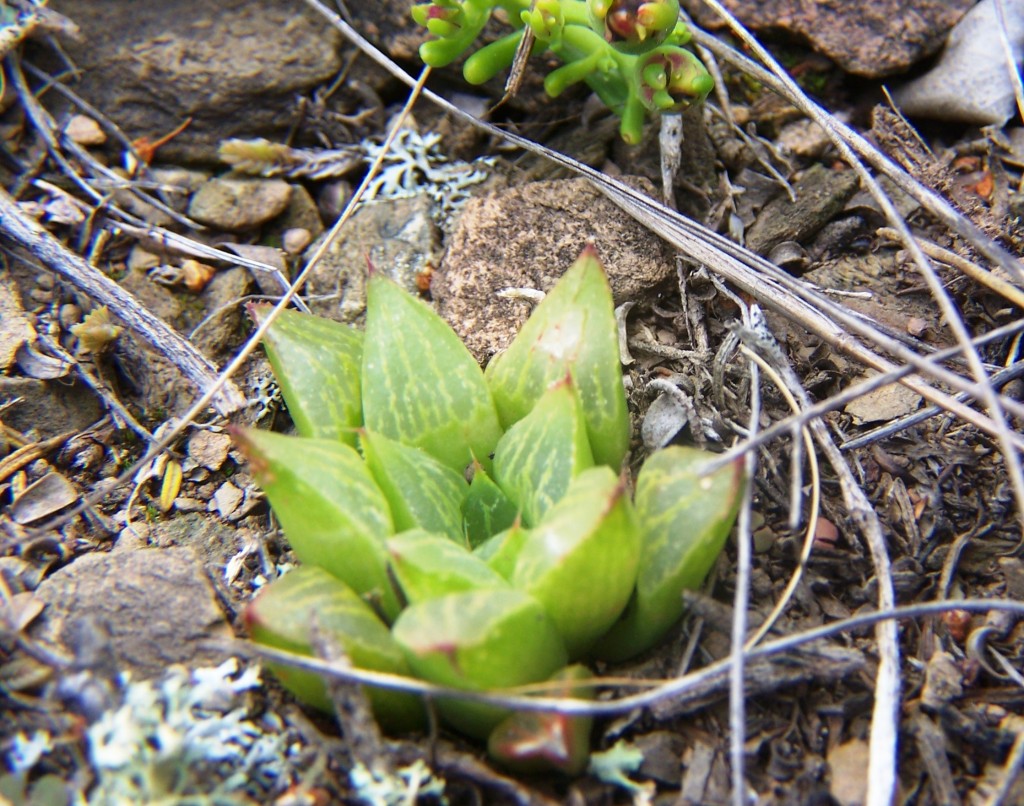
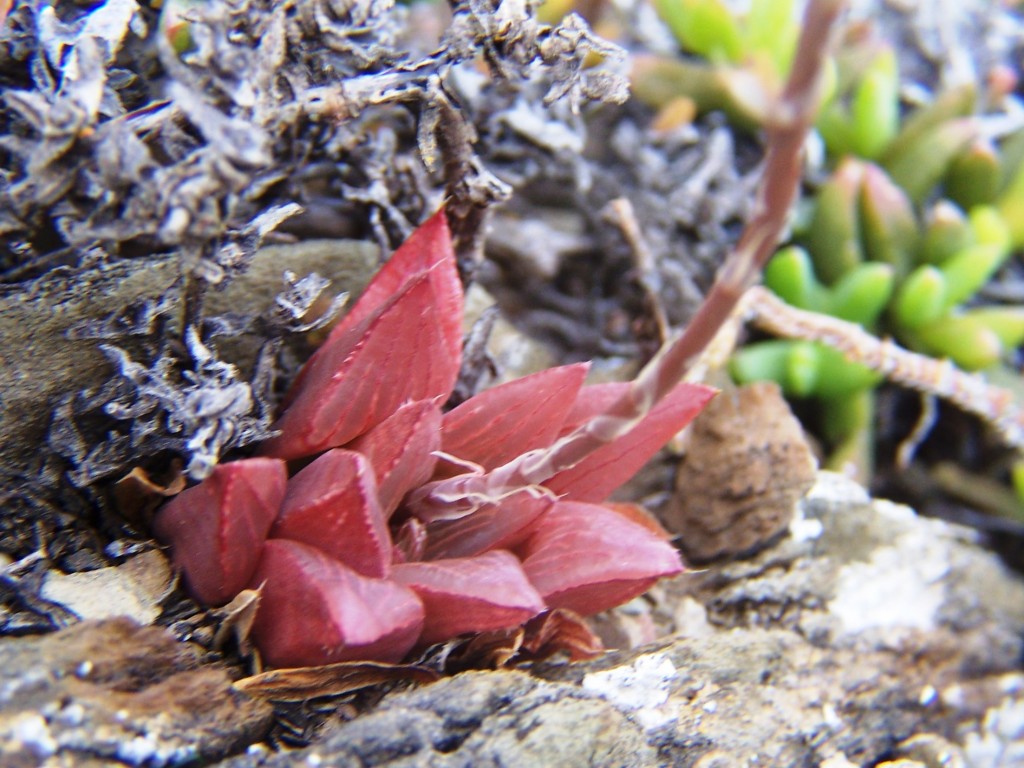
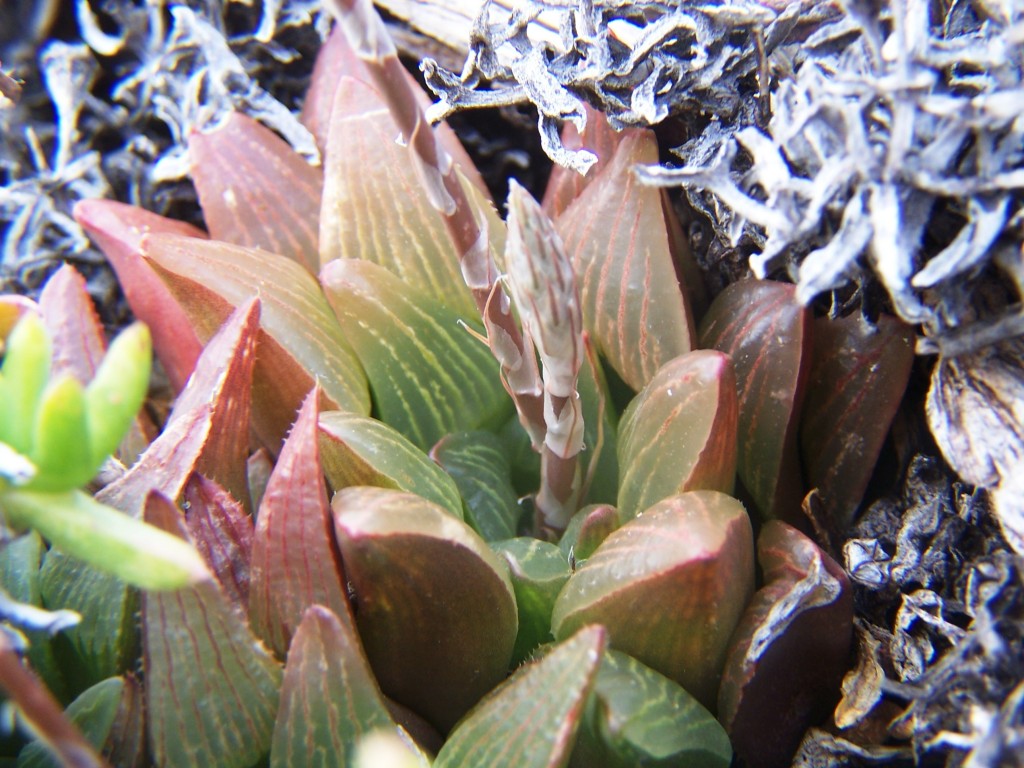
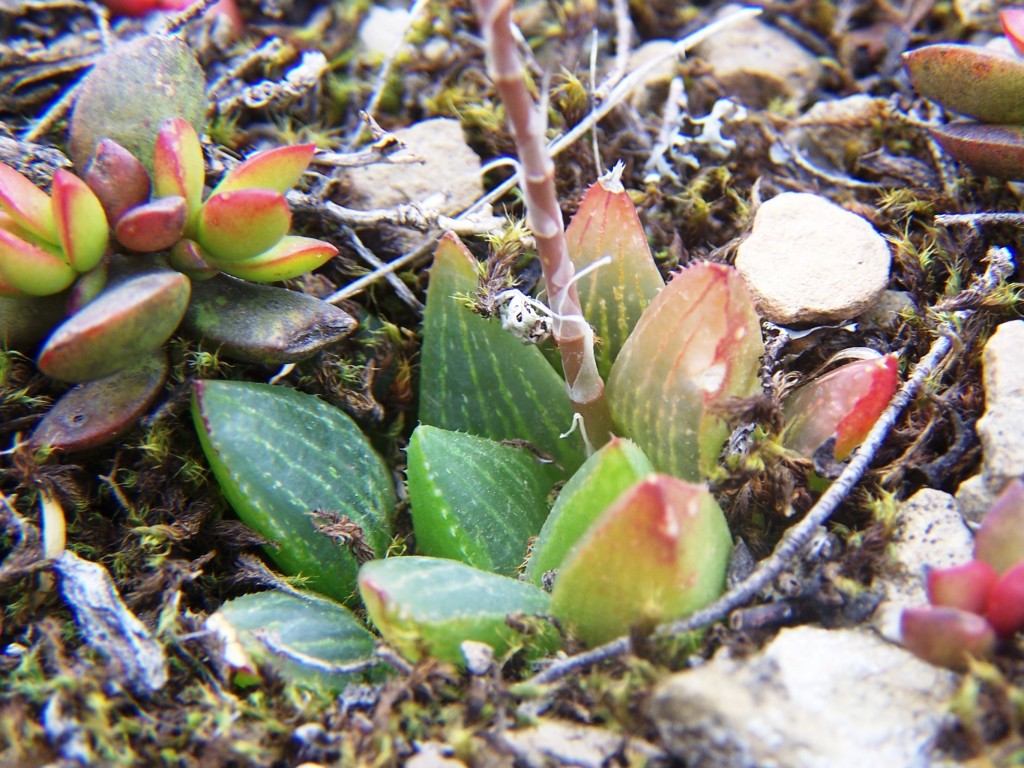
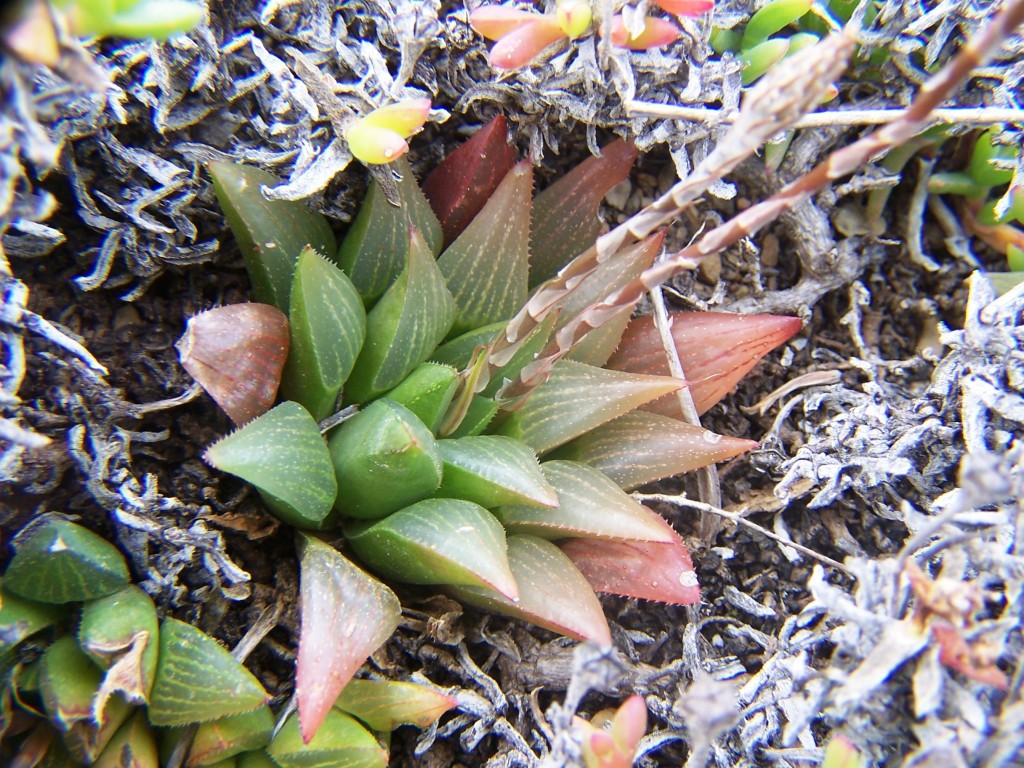
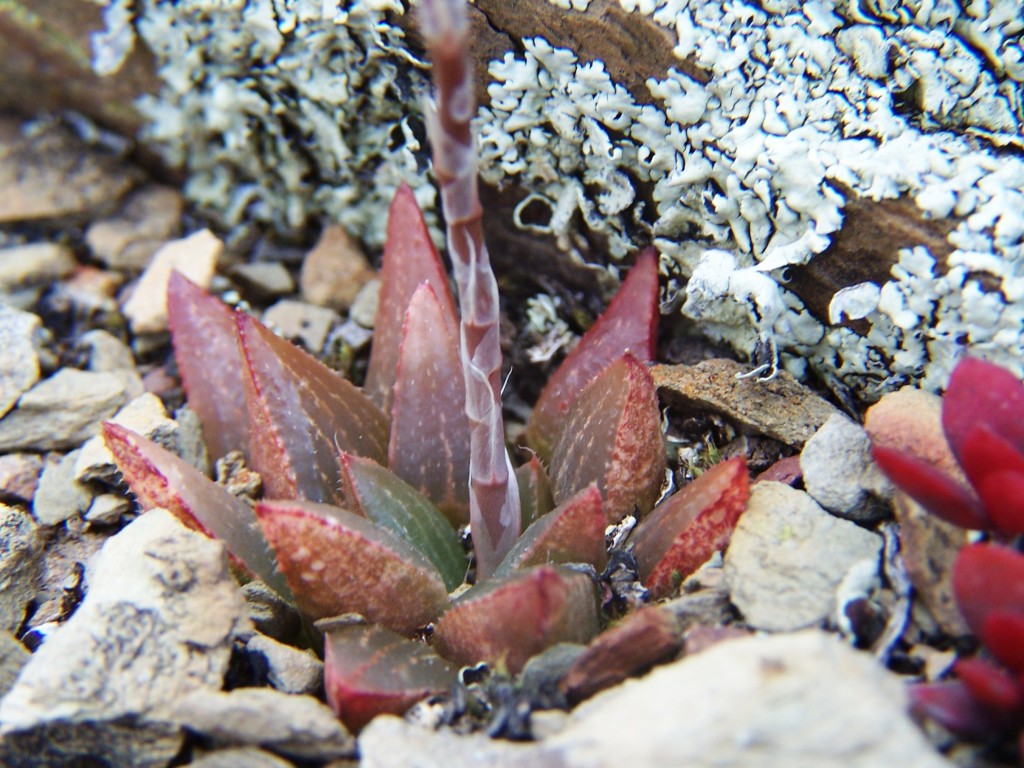
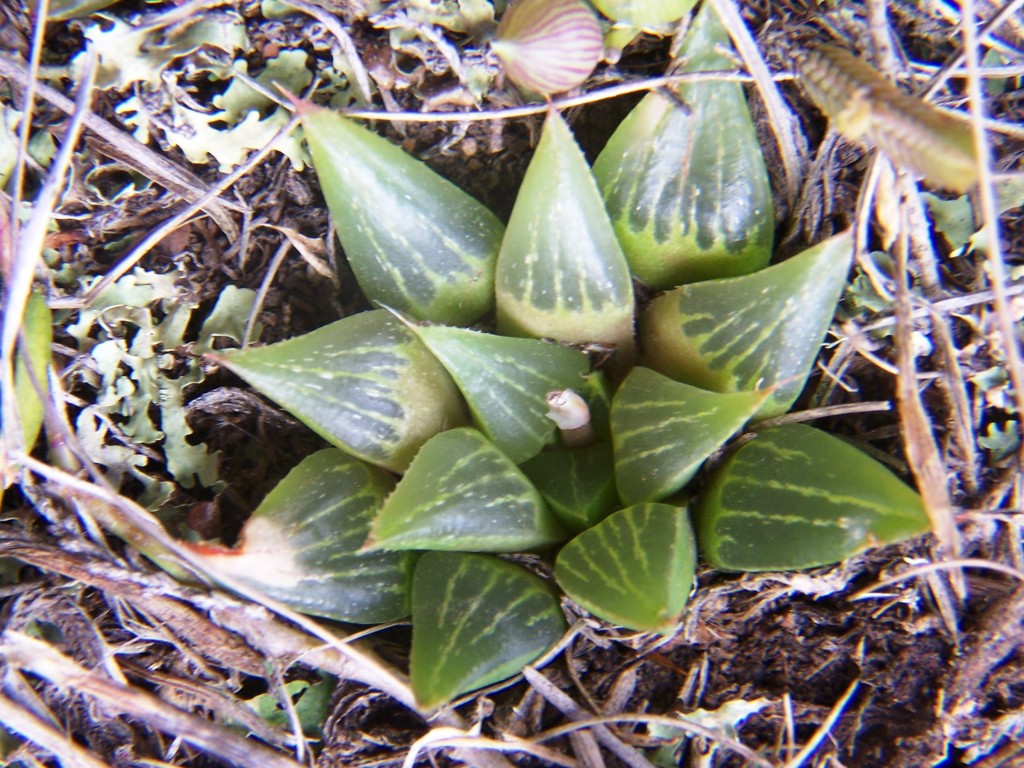
3. MBB7556 H. retusa ‘longibracteata‘. Dassieklip. There are ‘turgida’ populations all along the Duiwenhoks River. Some of these could be ‘turgida’ and some could be the variant ‘longibracteata‘. These at Dassieklip are close to the latter and are reminiscent of some of the large slender leaved plants one finds close to Heidelberg itself
However, the two plants illustrated are a few hundred meters west of the river and survivors of road materials quarrying. There are many more plants along the river itself and also at Brakrivier between Dassieklip,and Vermaaklikheid. But south of Dassieklip the river drainage passes from shale to calcrete and something really interesting may occur on the interface of these two geological formations northwest of Vermaaklikheid. Curiously no H. retusa is recorded at all between Brakrivier and Stilbaai to the east and this may be due to the calcrete substrate and the absence of suitable habitat.
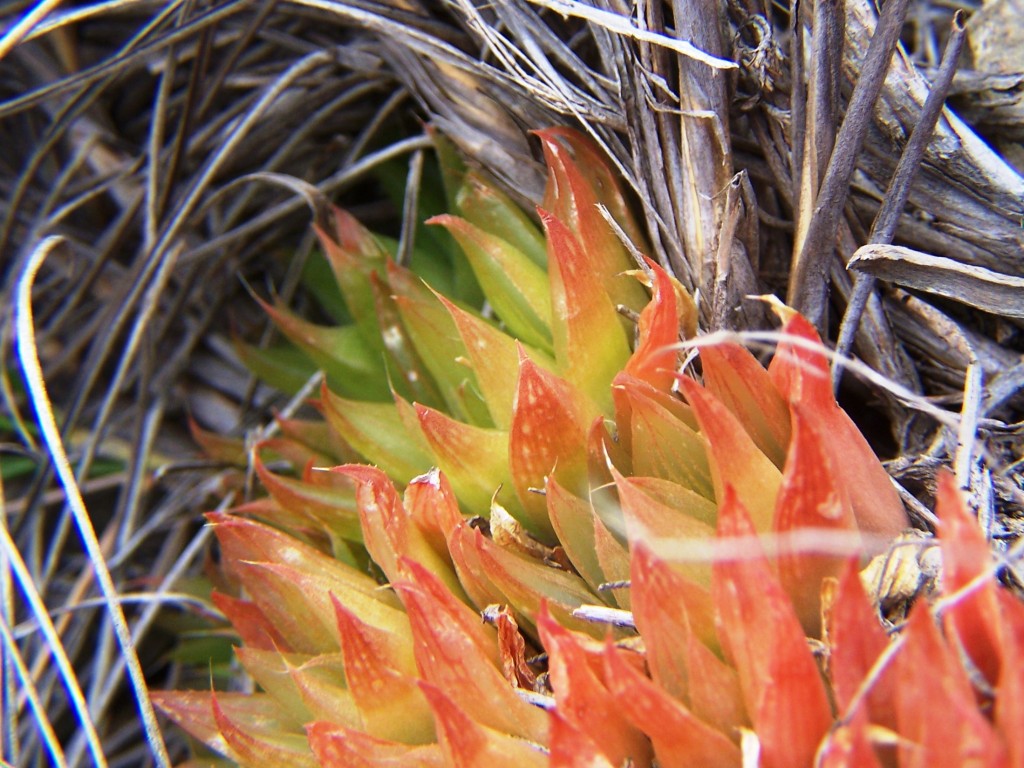
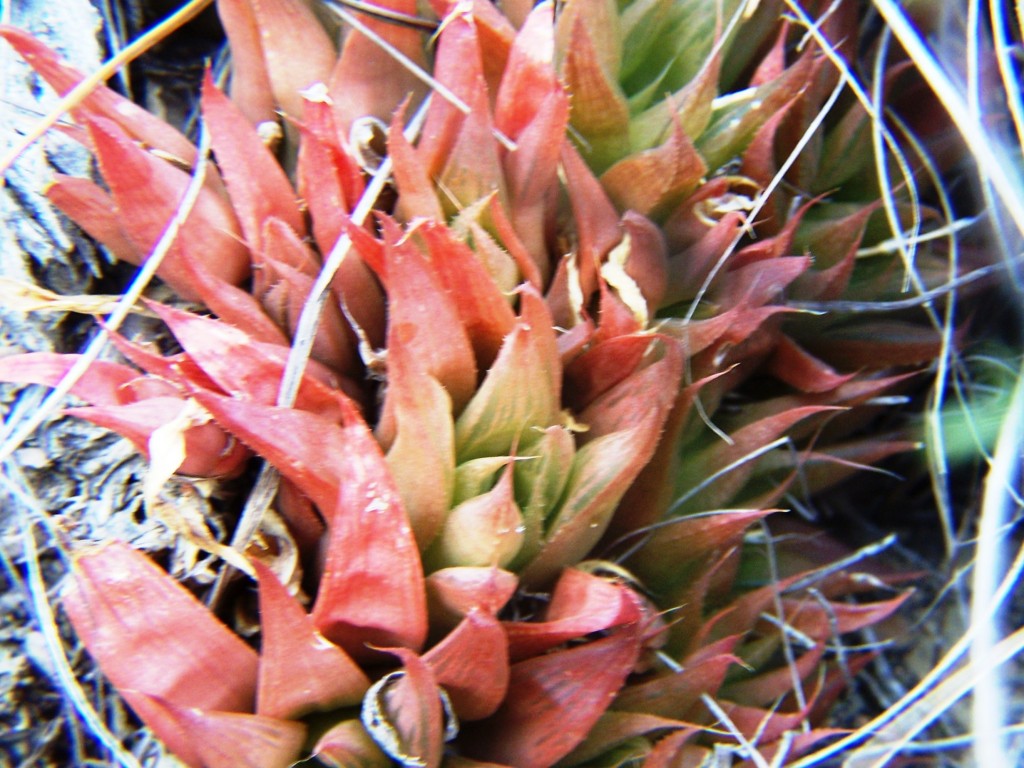
4. MBB7758 H. retusa ‘retusa’. Skietbaan. Riversdale. This is a very well known population and one of many in the general area extending slightly south and then west rather than east, although there is a population in the rocks of the Goukou river itself to the east. The plants are on a shale substrate and huge with again the expected variation that has been so obscured by the limited illustrative material of the historical past. The habitat is highly disturbed and it is in fact surprising that it has survived here so successfully. A road and a fence cross the site that follows the scale of the relatively confined areas the plants are usually found in. There are a heap of epithets that could be mobilized to personalize these plants and even ‘solitaria’, ‘geraldii’ and ‘fouchei’ could probably find application despite being out of true context.
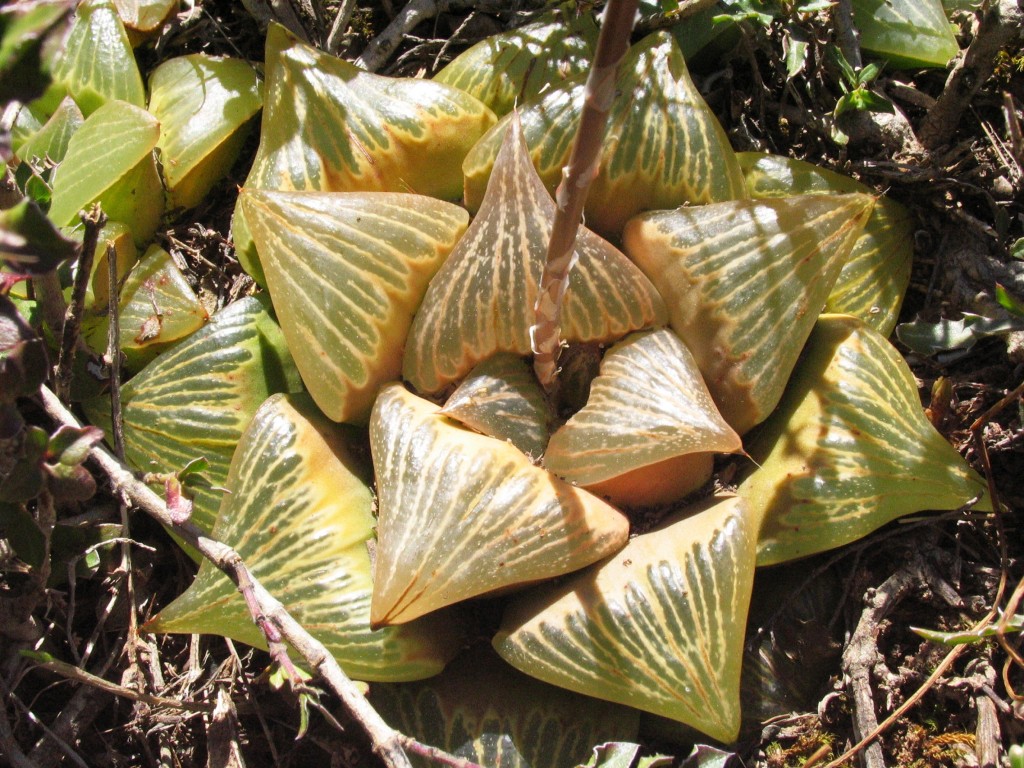
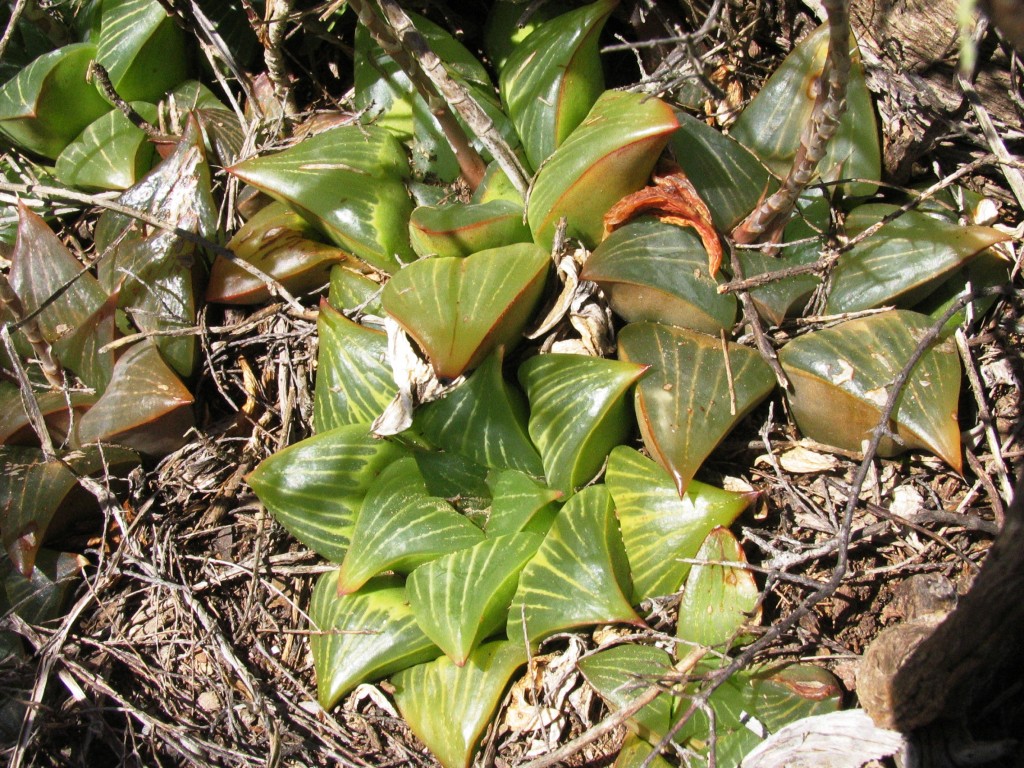
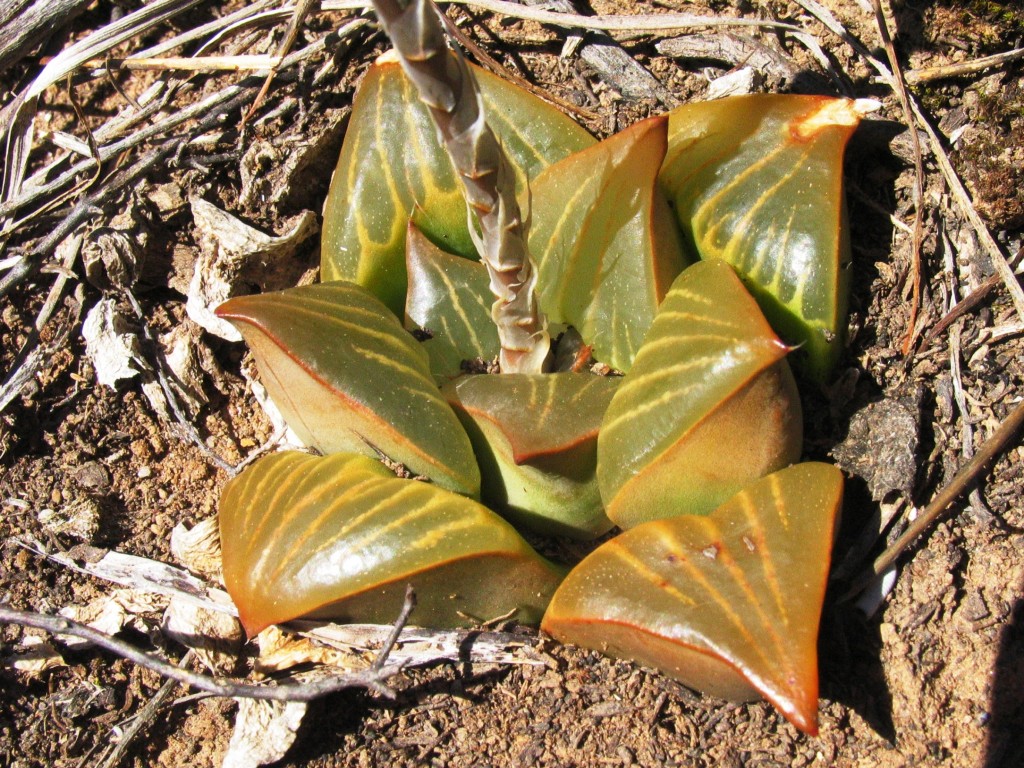

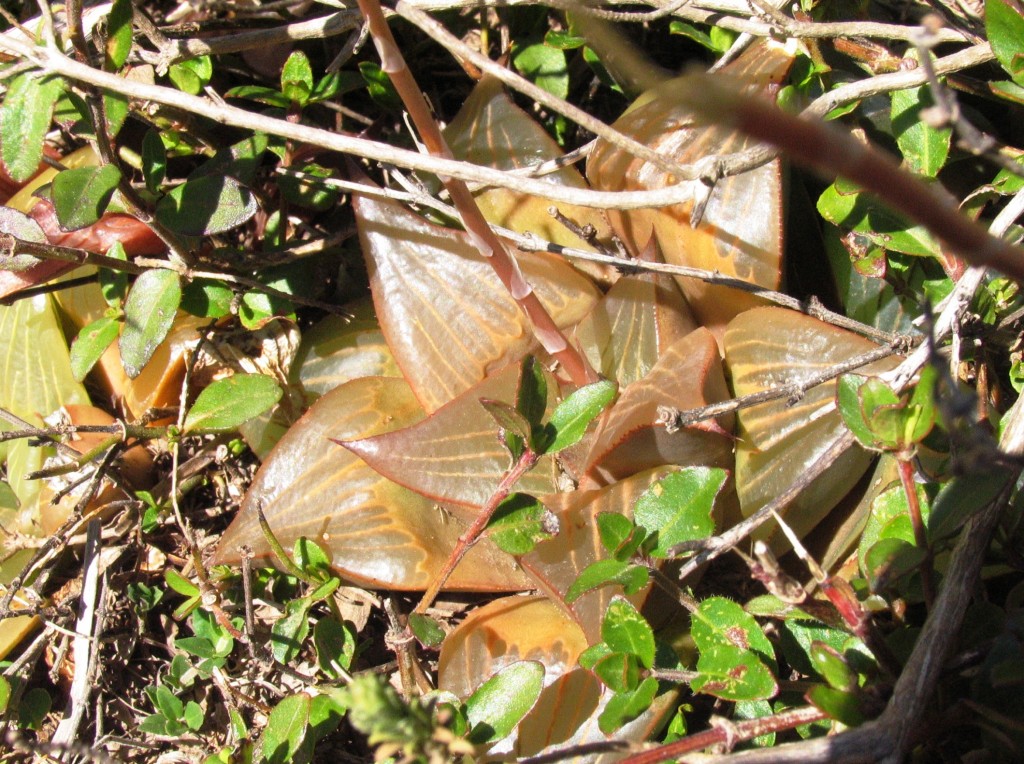
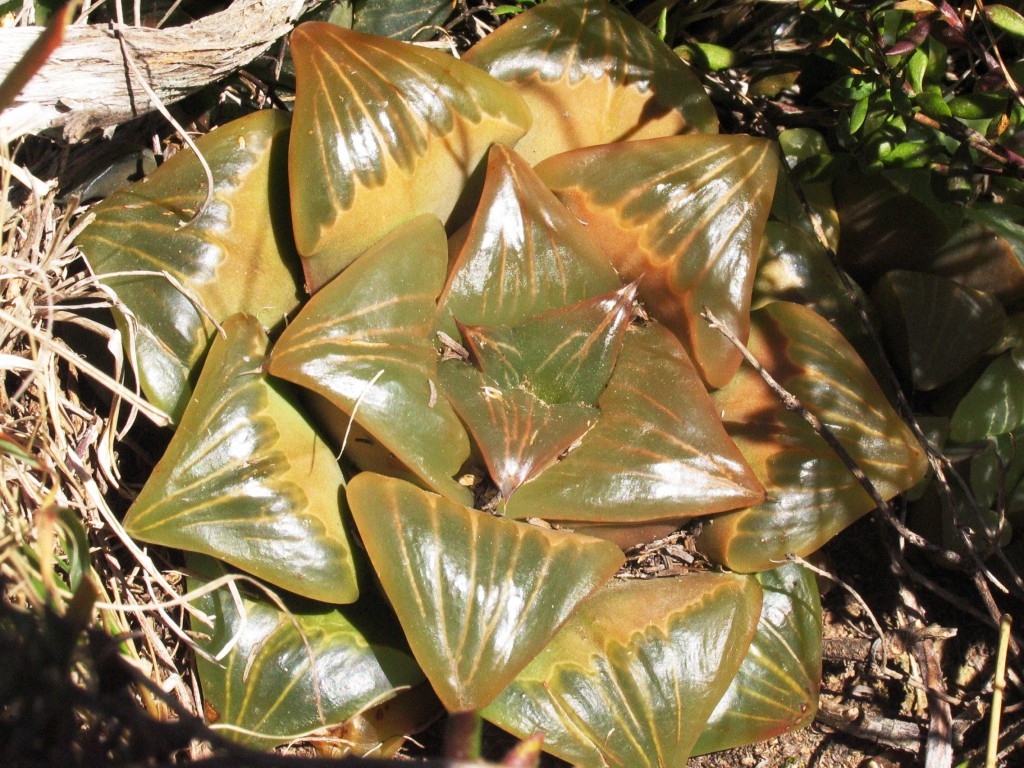
5. MBB7240 H. retusa. Skeiding. This population seems to be very relictual and I did not see many plants. I include it just to indicate that these ferricrete associated forms are here and they are trespassing into the series of populations that I discussed in the ‘mutica var. nigra’ story. That I now could refer to these as H. retusa ‘nigra’ should be seen as evidence of the flexibility and pragmatism that is really required to allow acceptance of a nature that we can understand.
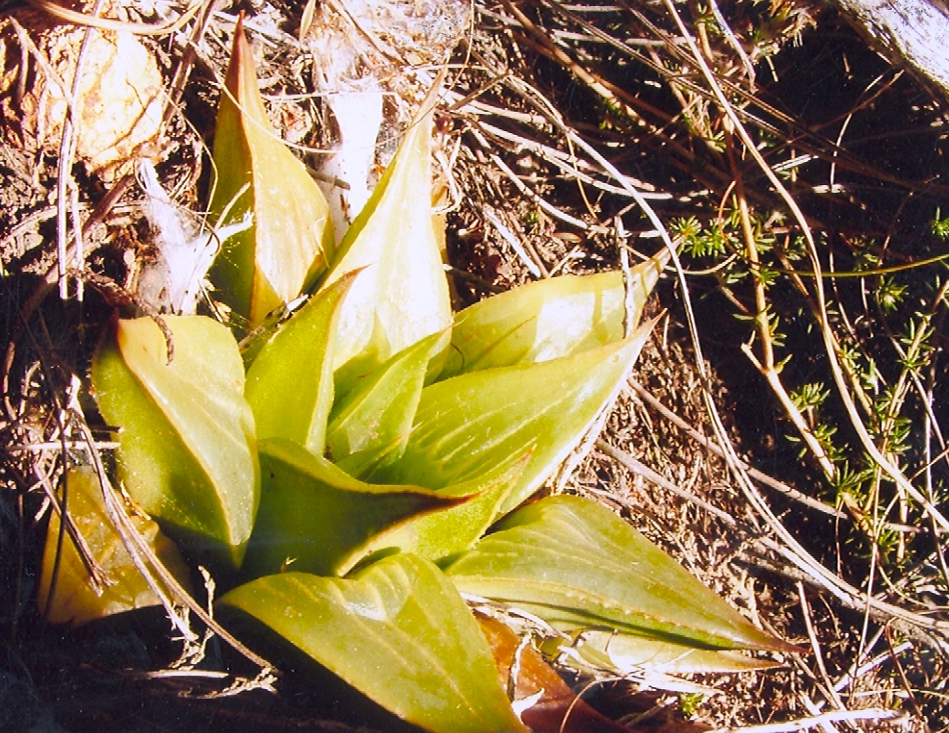
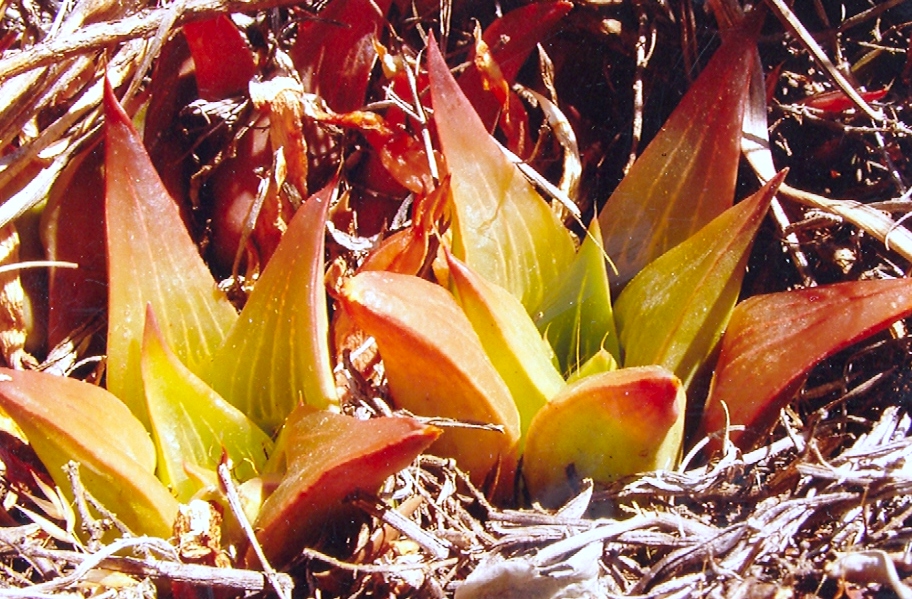
6. JDV93/57 H. retusa. Plattekop. There are several populations in the ferricrete inselbergs. They are inclined to shiny yellow colours and rather longer, more erect leaves than one would expect in H. retusa. In fact one can see a drift from the latter to ‘longibracteata’ in the broader context that I originally used the name to really suggest populations that were neither ‘retusa’ nor ‘turgida’. This particular habitat is unusual in that the rock is larger than usually accepted by the plants and there is quite an infusion of the white clay of decomposed shale. The plants seemingly, and consequently, take on a rather powdery and milky appearance.
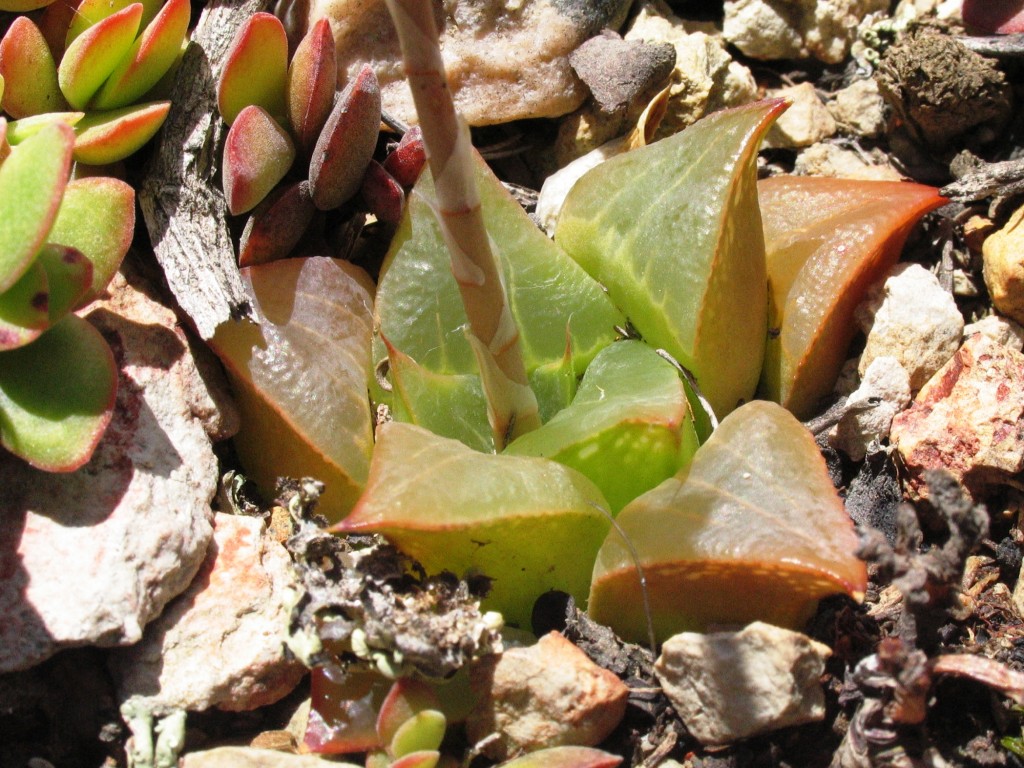
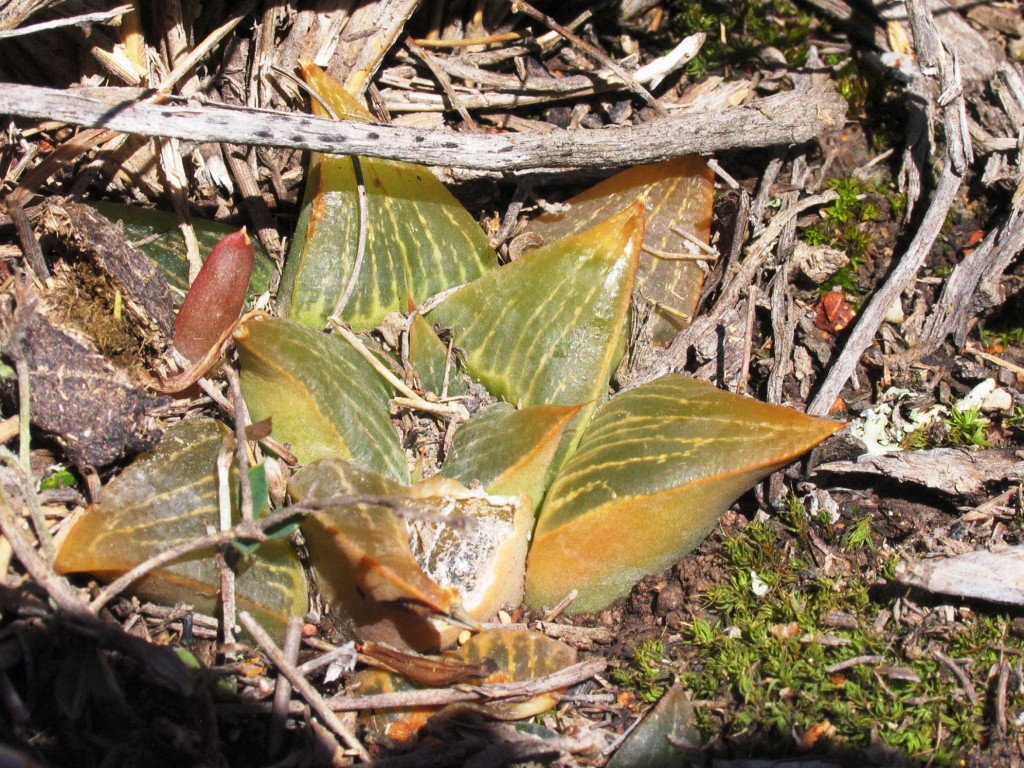
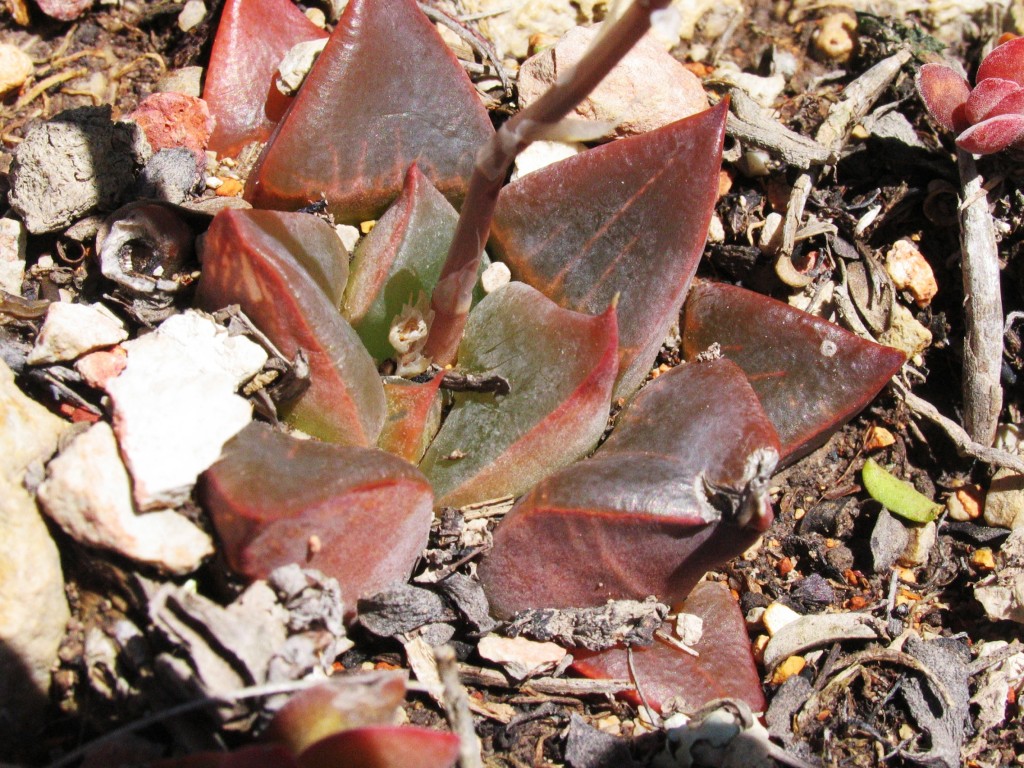

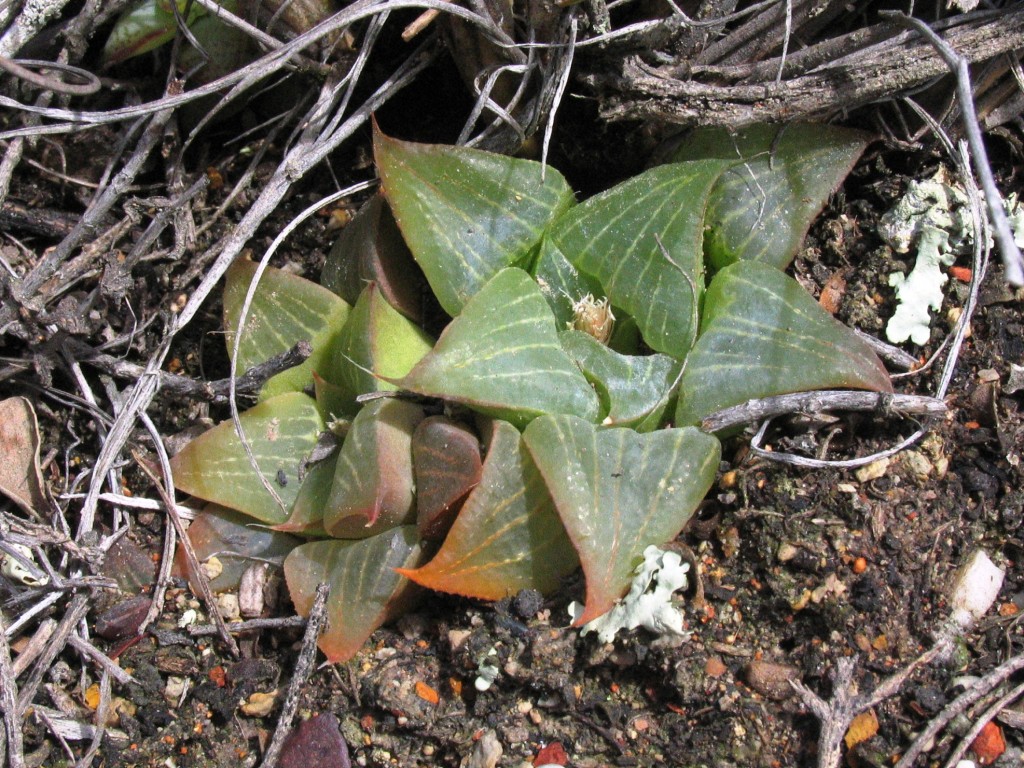
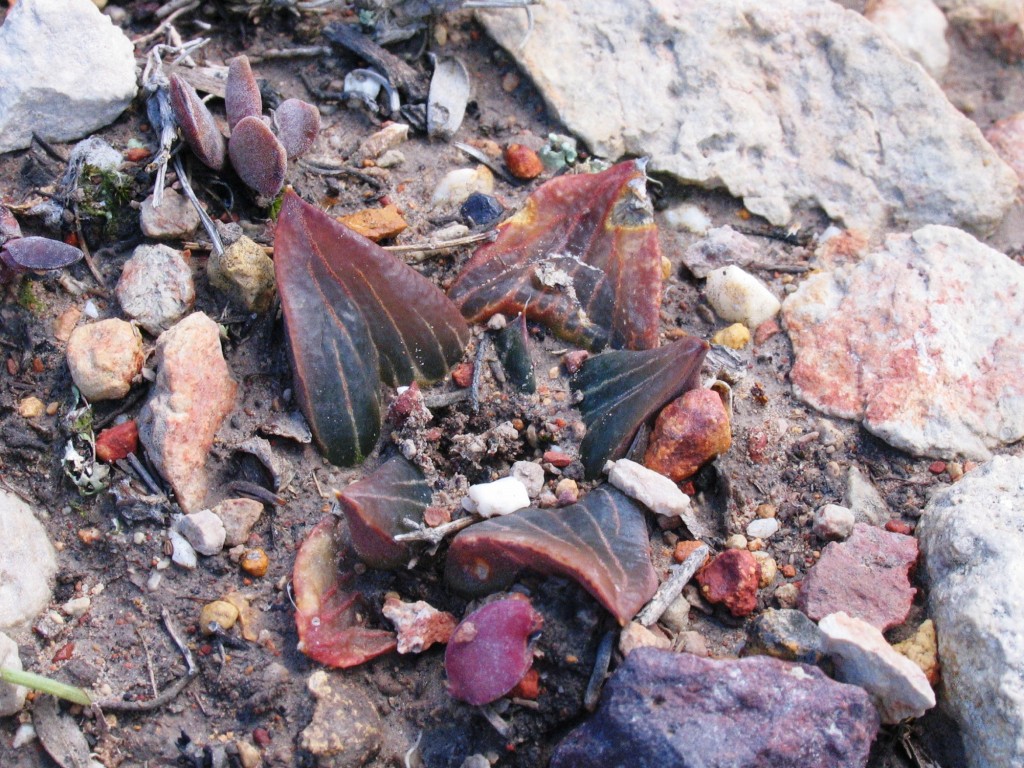
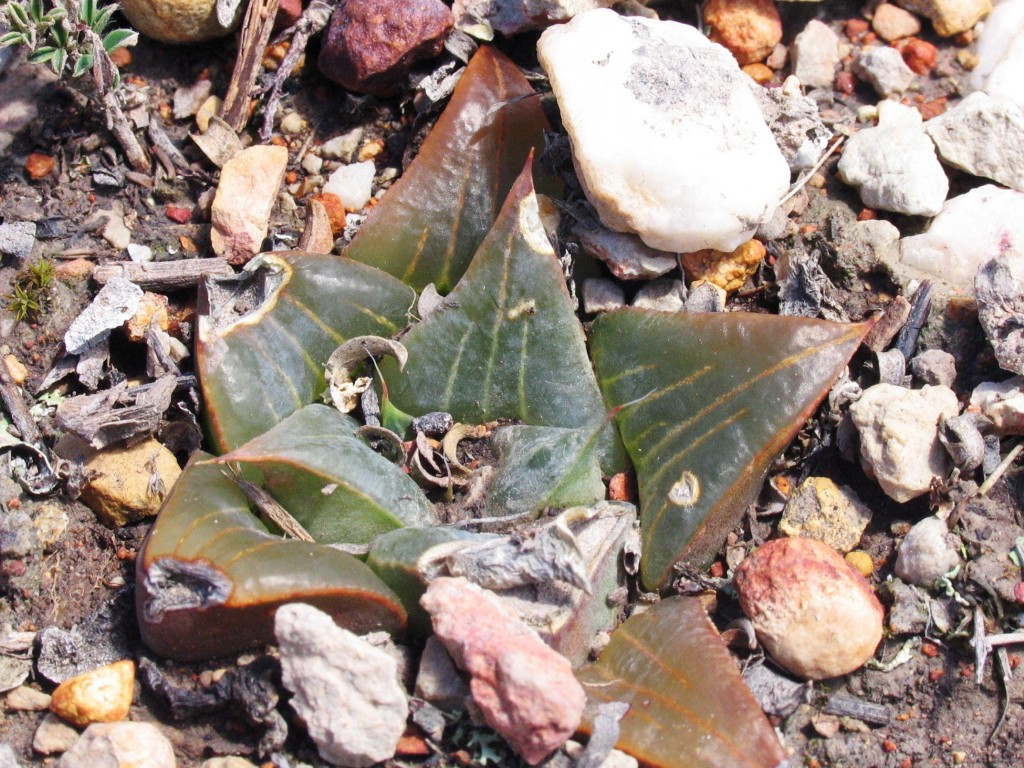
7. MBB7772 H. retusa. Platkop Annex. Where Skeiding is west of Heidelberg, Plattekop and Platkop Annex are east of Riversdale. These and the next two populations form an important extension of the distribution of the species eastwards and to perhaps emphasize a distinction between H. retusa as it grows on the inselbergs as opposed to H. retusa ‘turgida’ that is riverine.
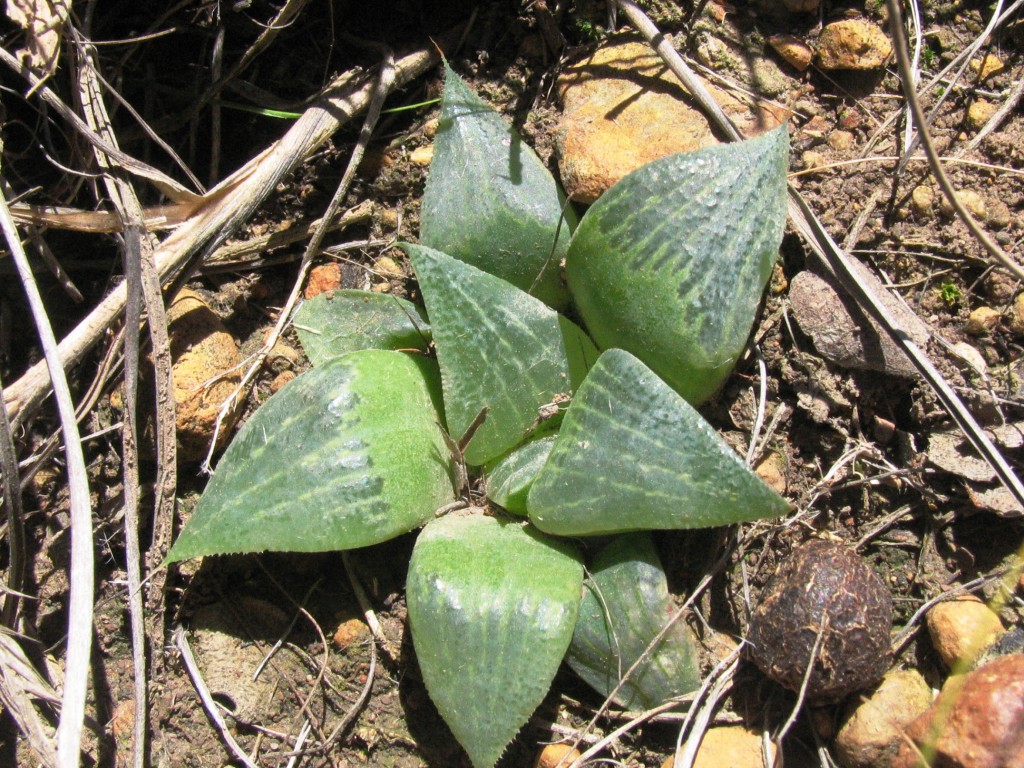
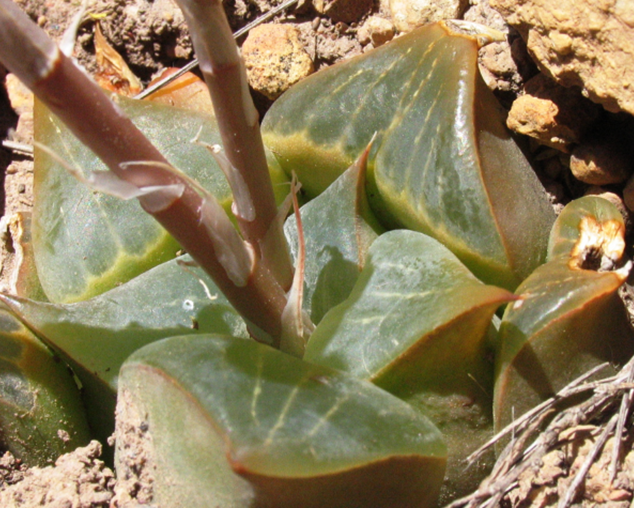
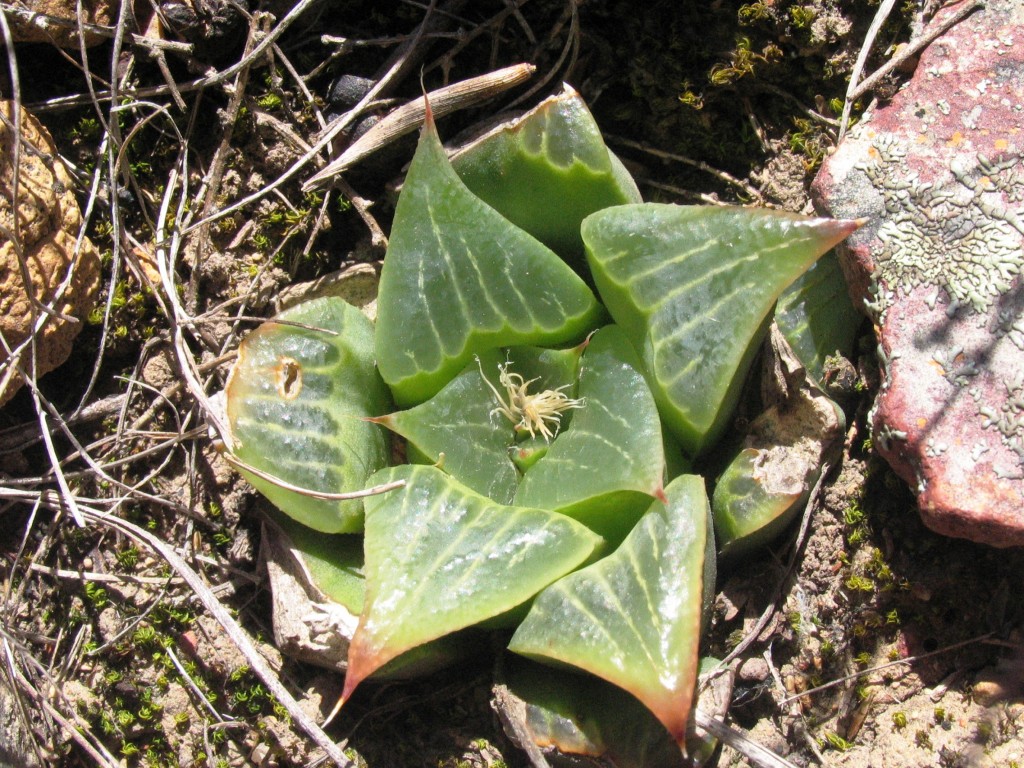

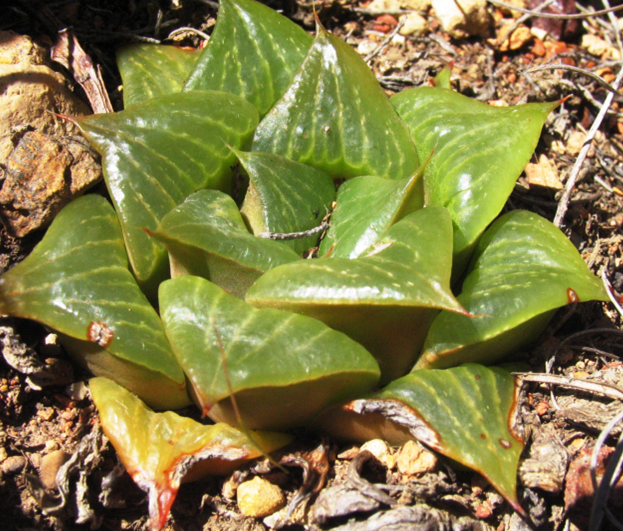
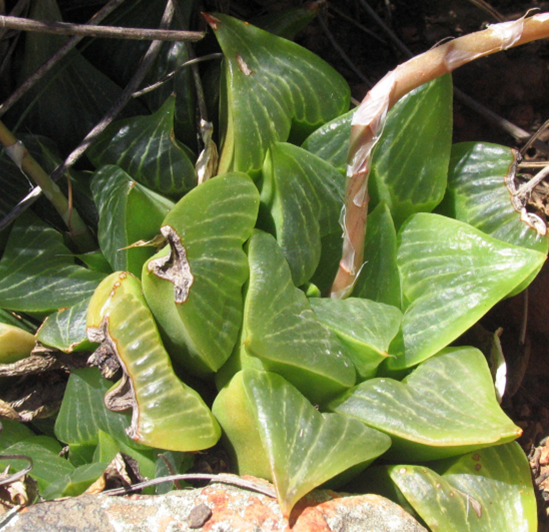
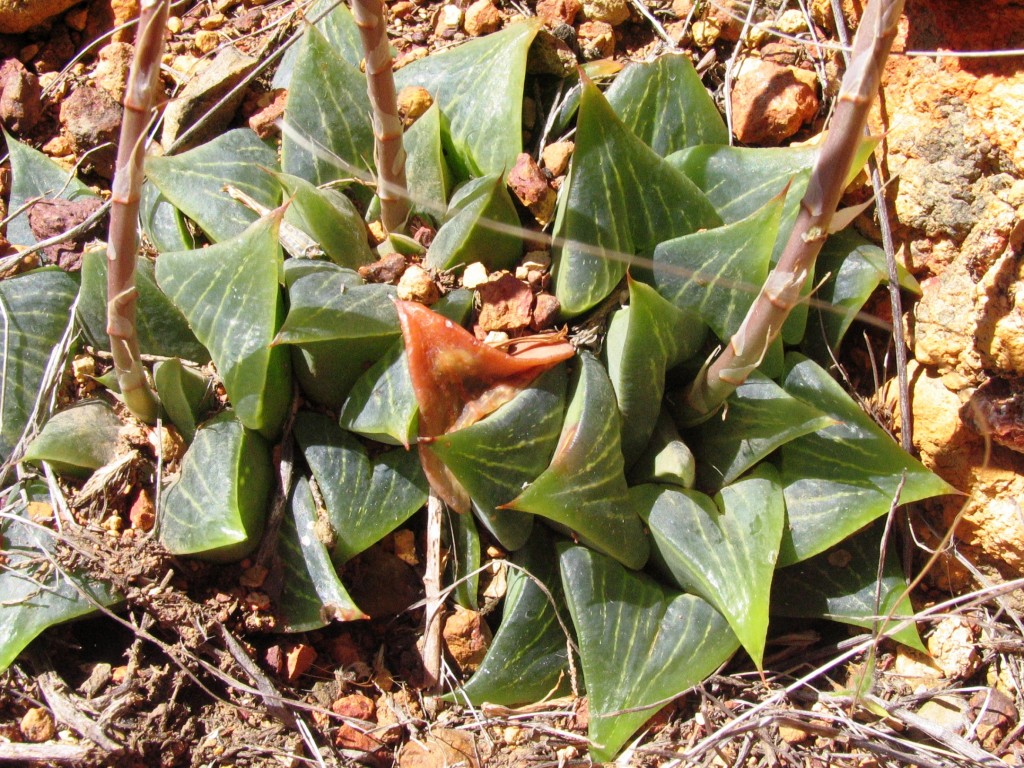
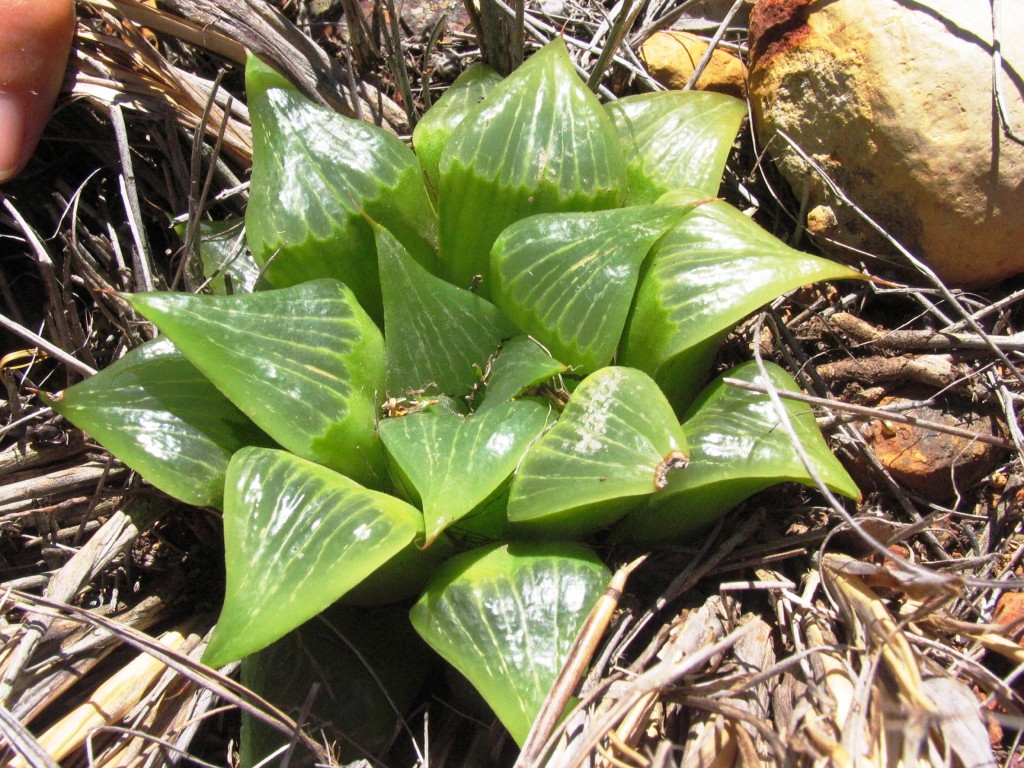
8. MBB7765a H. retusa. Plaatjieskop. These plants are very similar to the two preceding. A similar population was shown to me by Japie Dekenah at Rooikoof to the north. What is significant here is the presence of hybrids with H. floribunda (fig. 74) and that in turn by the fact that H. retusa flowers in spring and H. floribunda in summer. Such hybrids are known at Cooper siding between H. pygmaea ‘argenteomaculosa’ and H. floribunda and also at Blackdown, N. Heidelberg between H. retusa ‘turgida’ and H. floribunda. Because I consider that there is a deep-seated ‘problem’ of interaction like this between major role players, I will discuss this again elsewhere.

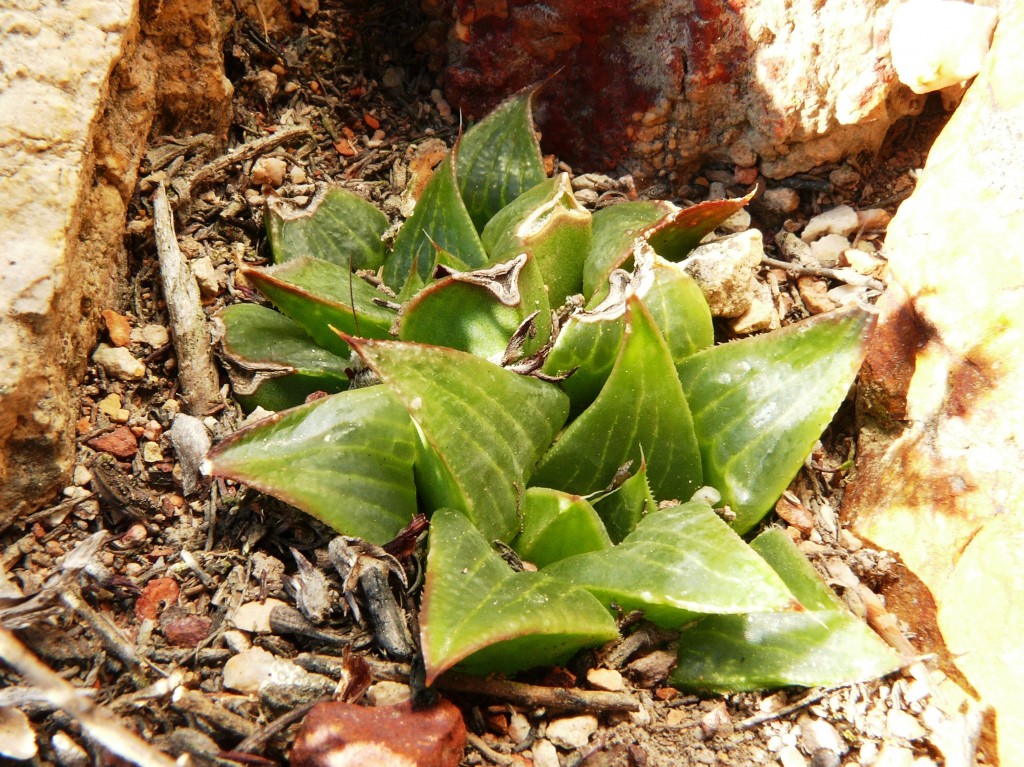


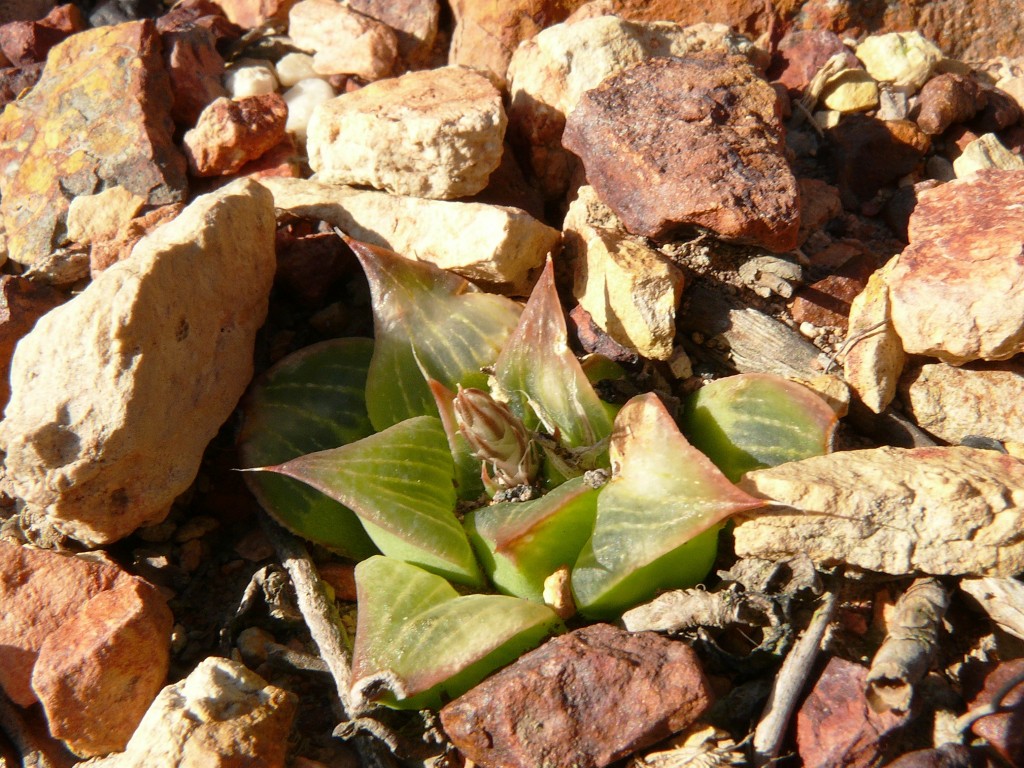

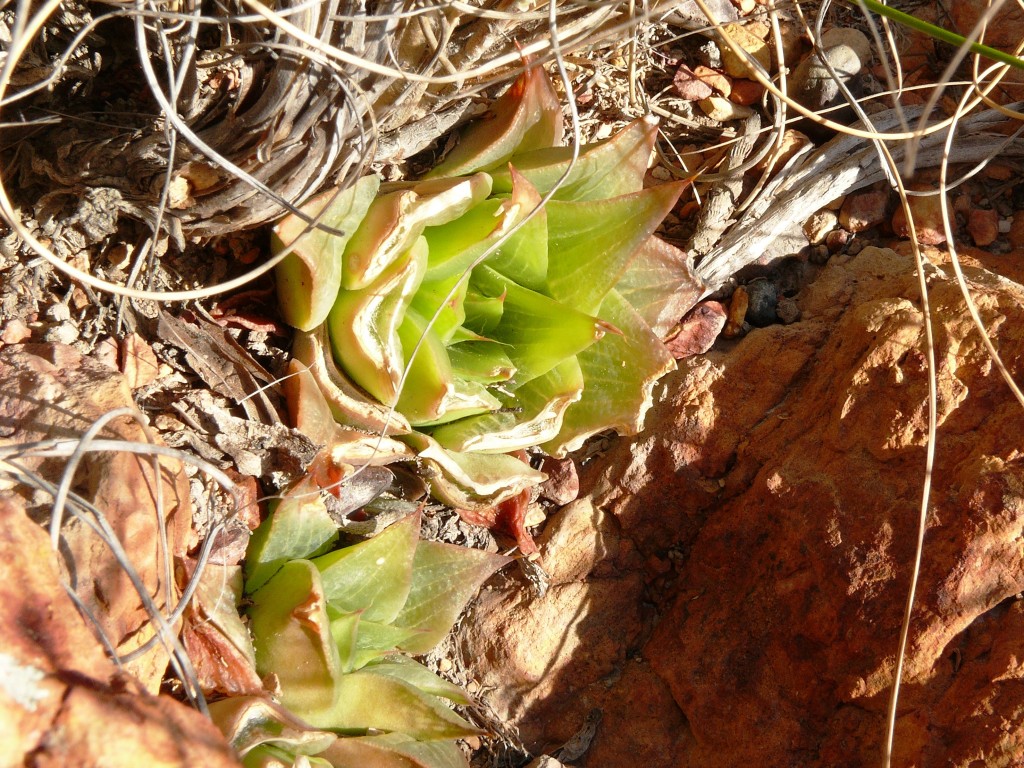
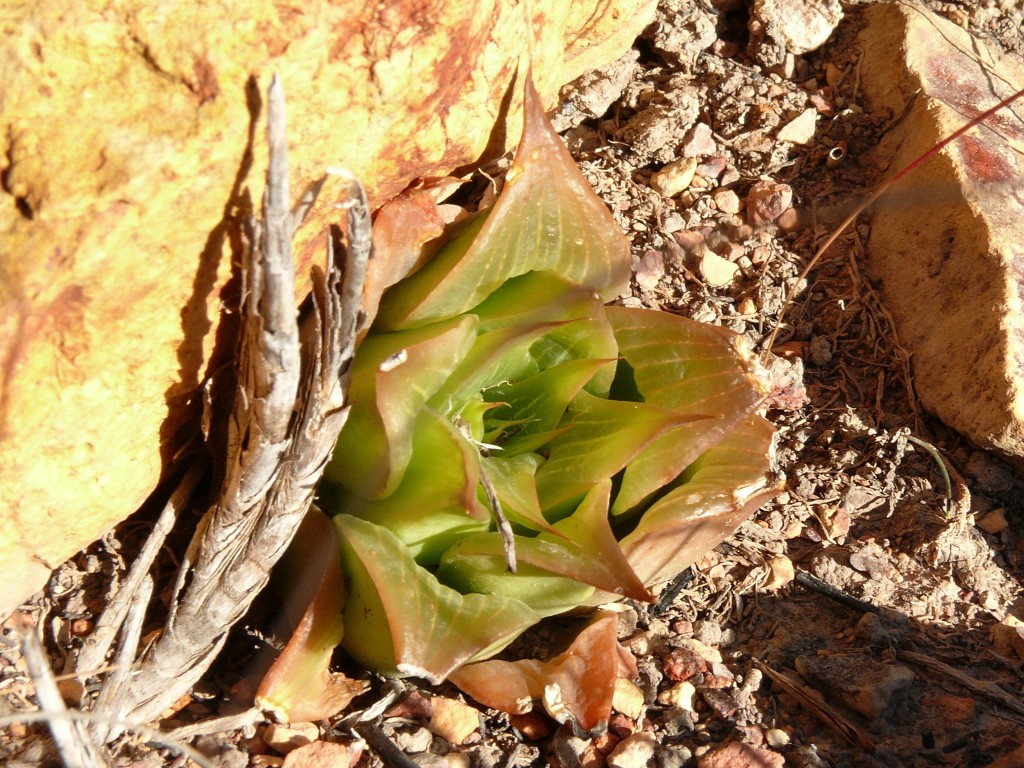
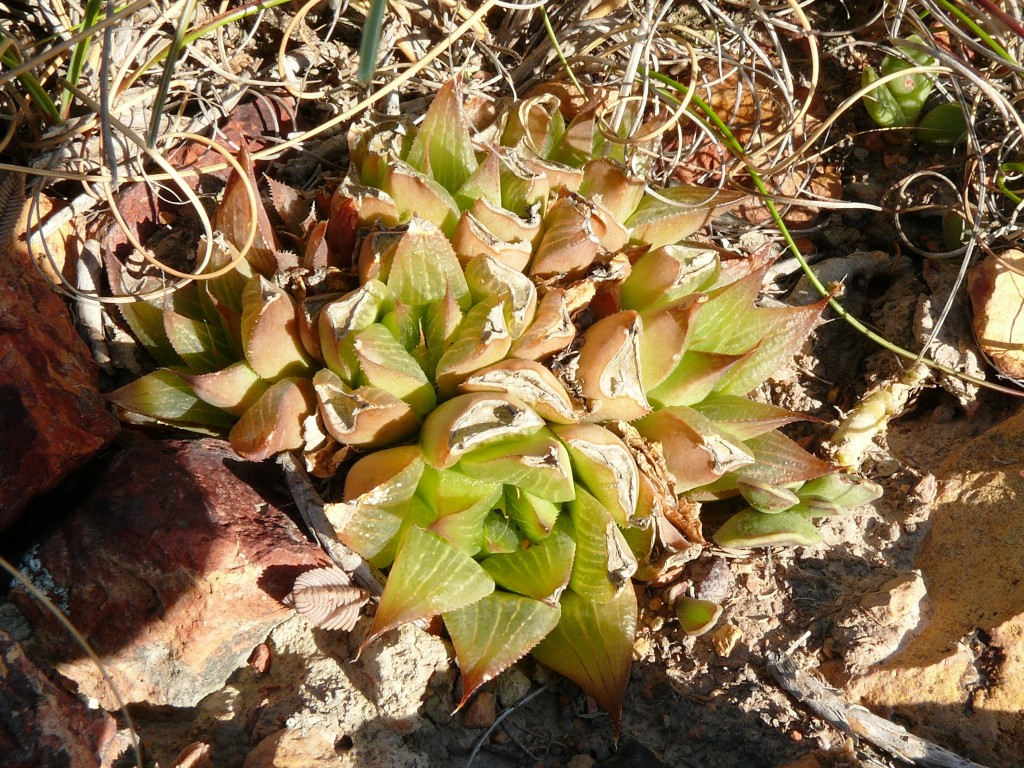
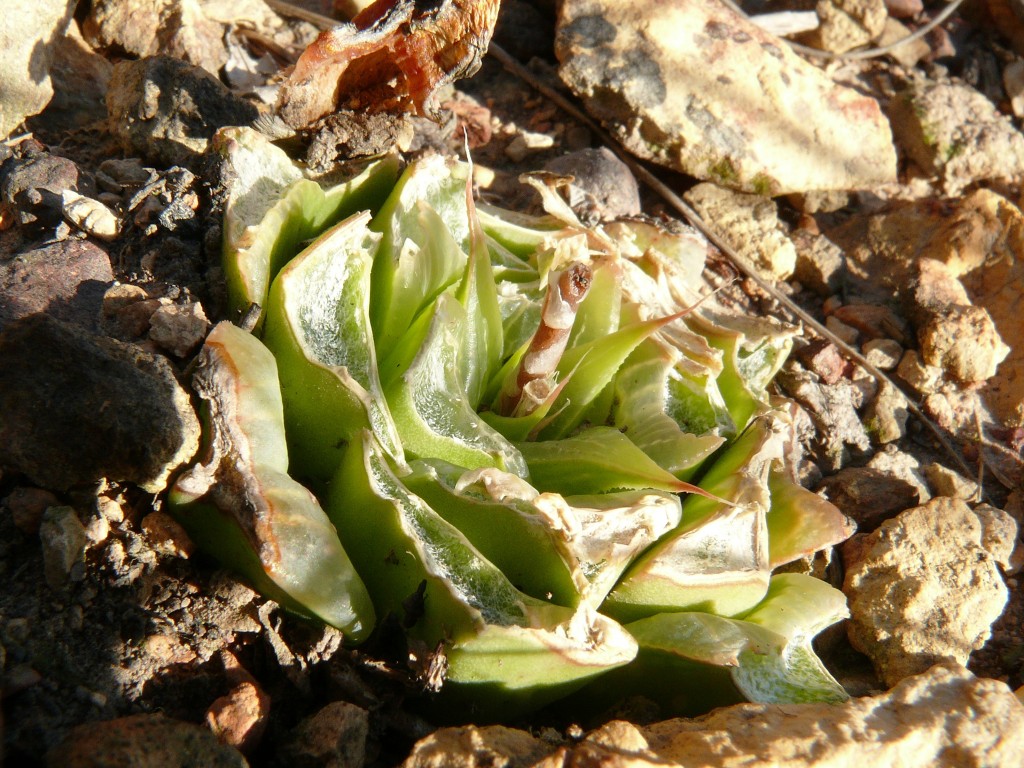

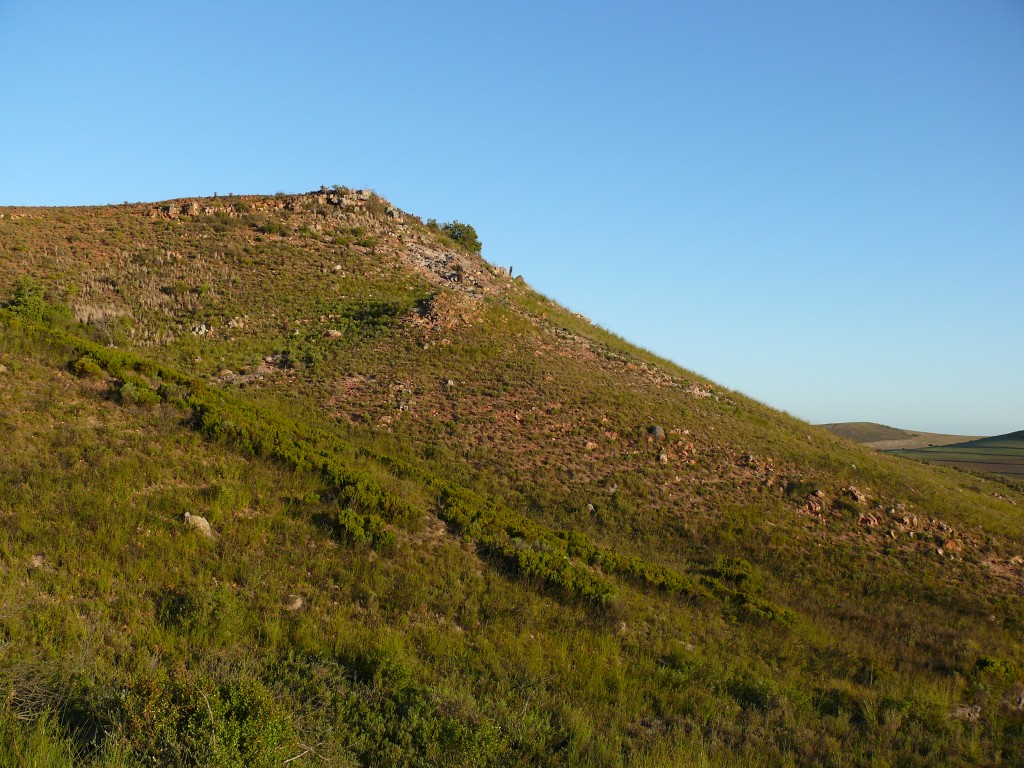
9. MBB7771 H. retusa. W Soetmelksrivier. There are seemingly always surprises in Africa (“always something new”) and this is one. Not only does H. retusa grow in direct association with H. mirabilis cf. ‘splendens’ but the habitat encroaches on the highly ferruginous rocks that form the hardest layer of the ferricrete inselbergs. It is really only two populations in the Kweekkkraal area where haworthias can be said to be truly in this kind of rock. ♦

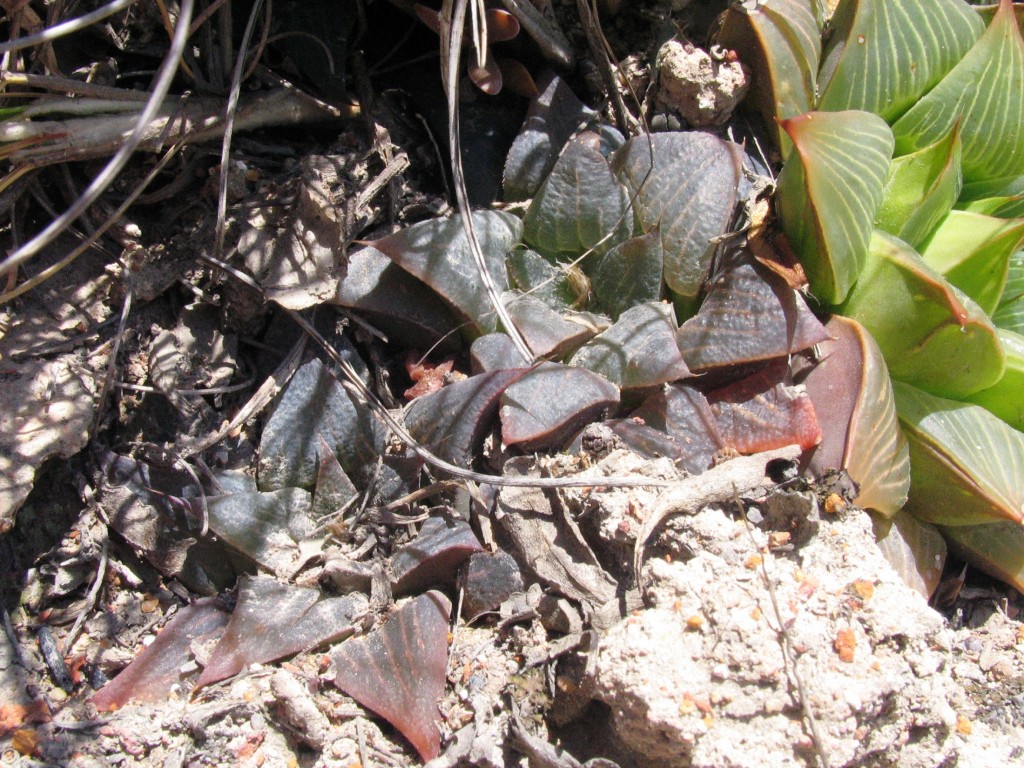


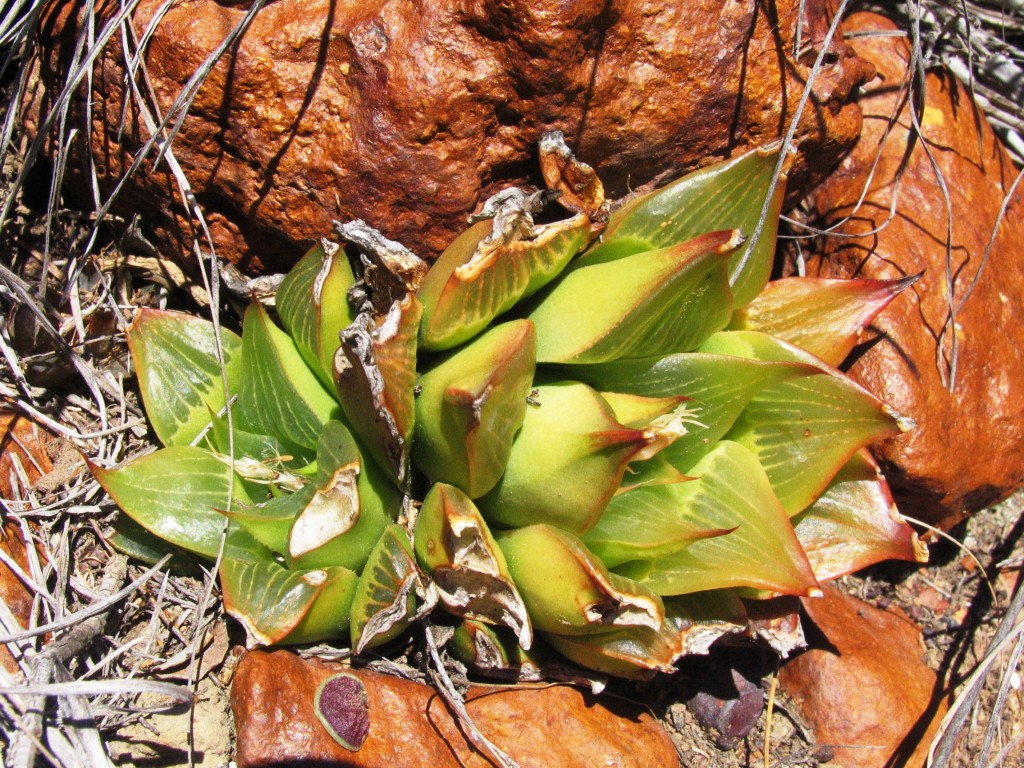
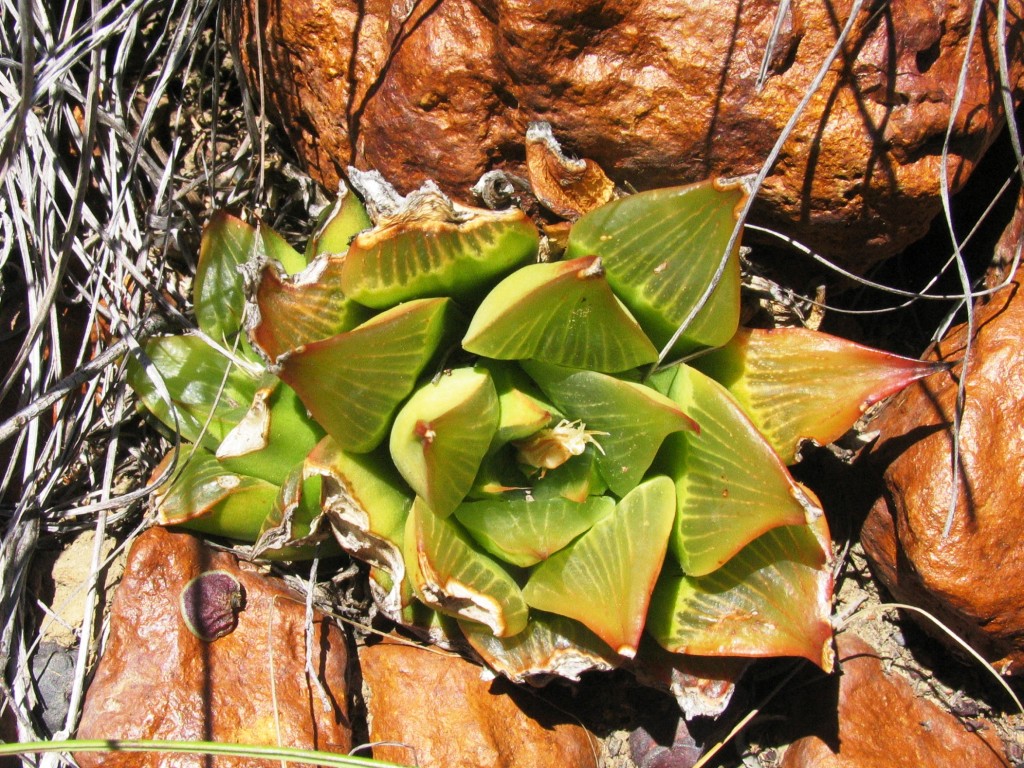

Pingback: Mystery - part 1, Heidleberg and Albertinia - Haworthia Updates